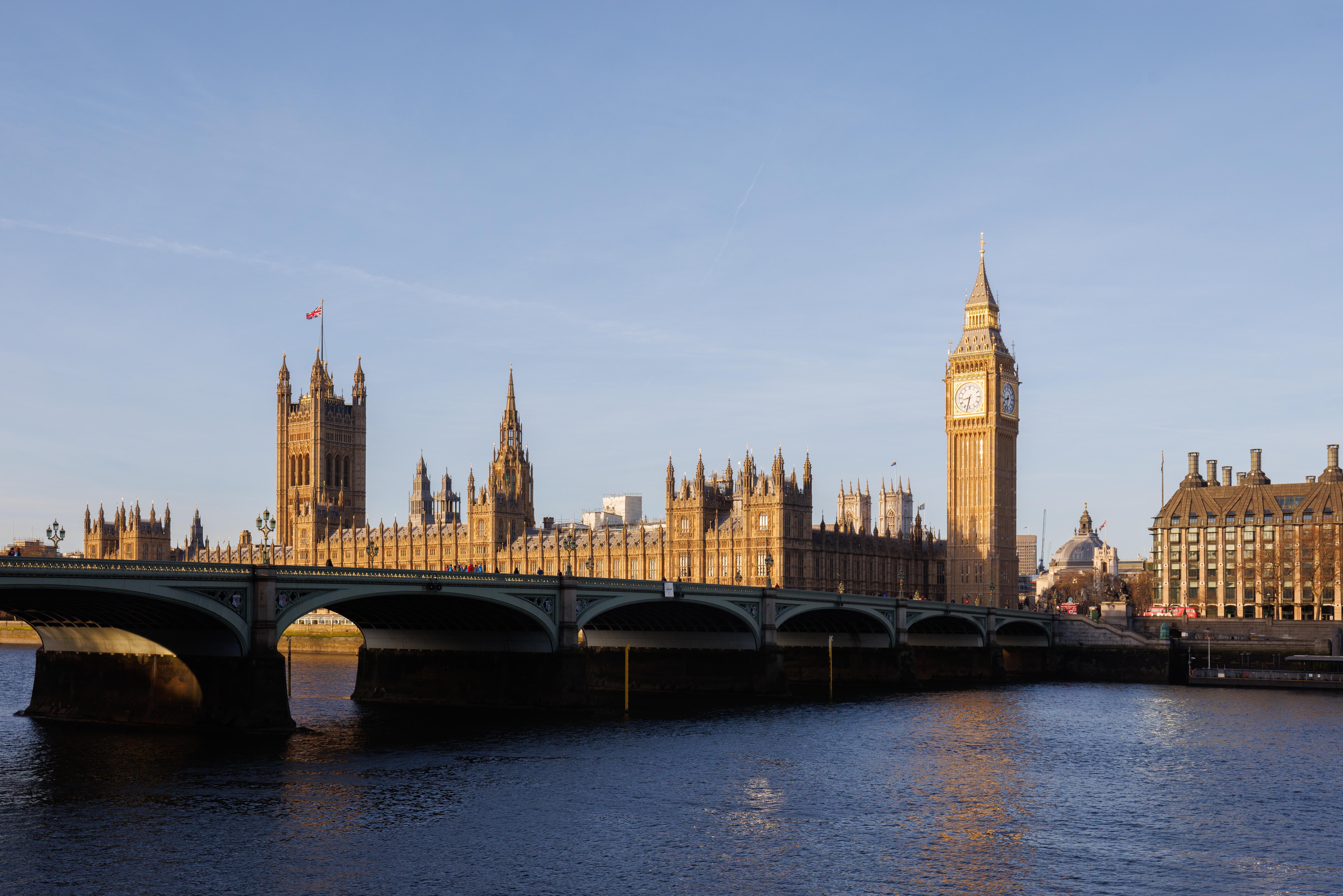After a very early arrival in London, we dropped off our bags at our hotel and headed over to Westminster. We walked across the Thames and by Big Ben and headed into St. James Park. We walked past the lake, taking some time to look at all the British birds. We arrived at Buckingham Palace in time to get a good spot to view the changing the guard ceremony. Afterwards, we headed directly to Wellington Arch where we caught the Underground to Piccadilly Circus where we had lunch. We then continued onward through Leicester and Trafalgar Squares, soon reaching the Thames once again. We crossed via the Jubilee Bridge, continuing along the Thames back to where we started our day!
The Thames
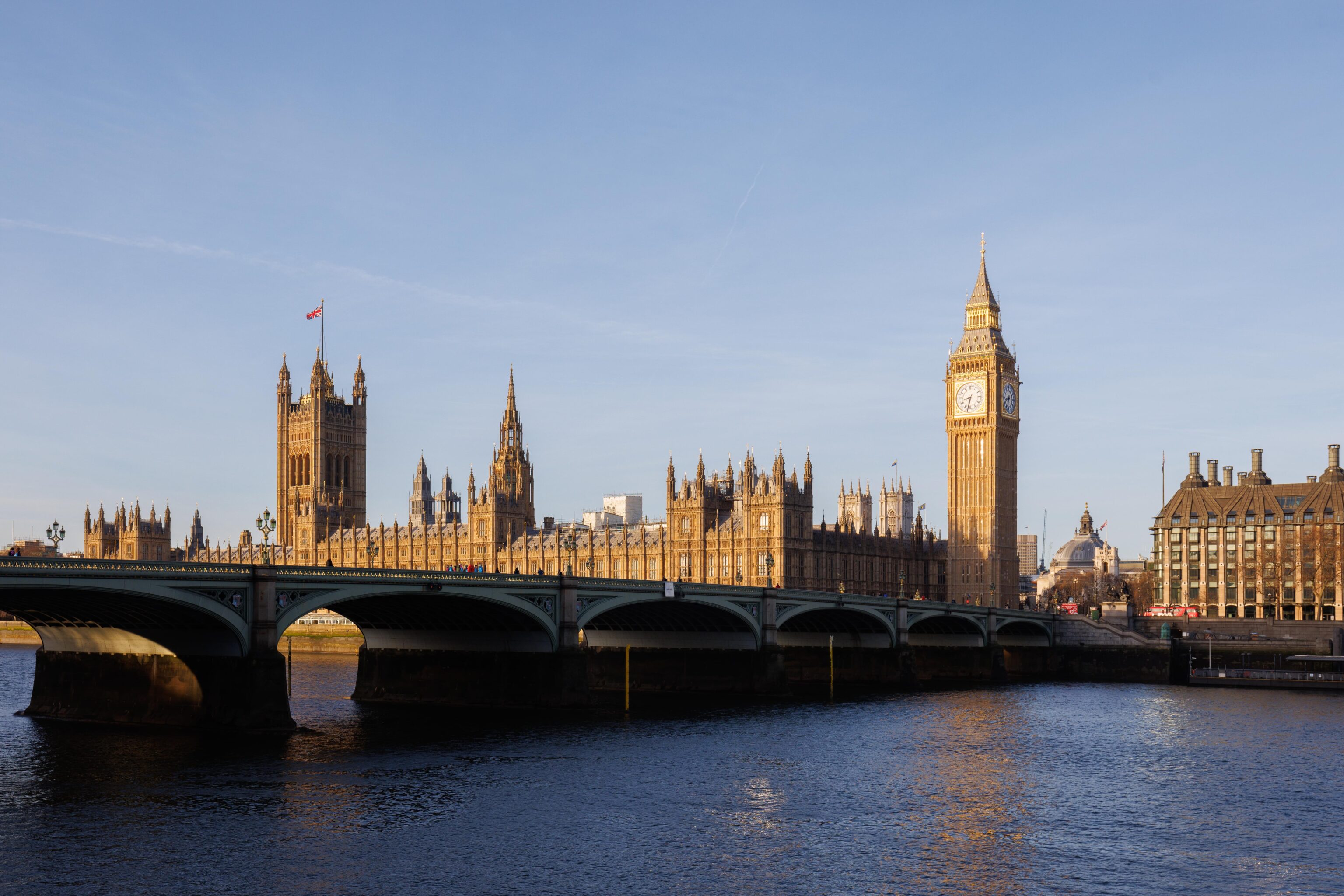
One of the most iconic sights of London is Big Ben, the clock atop Elizabeth Tower attached to the Palace of Westminster. The winter sun was still very low on the horizon, resulting in a beautiful glow on these famous landmarks.
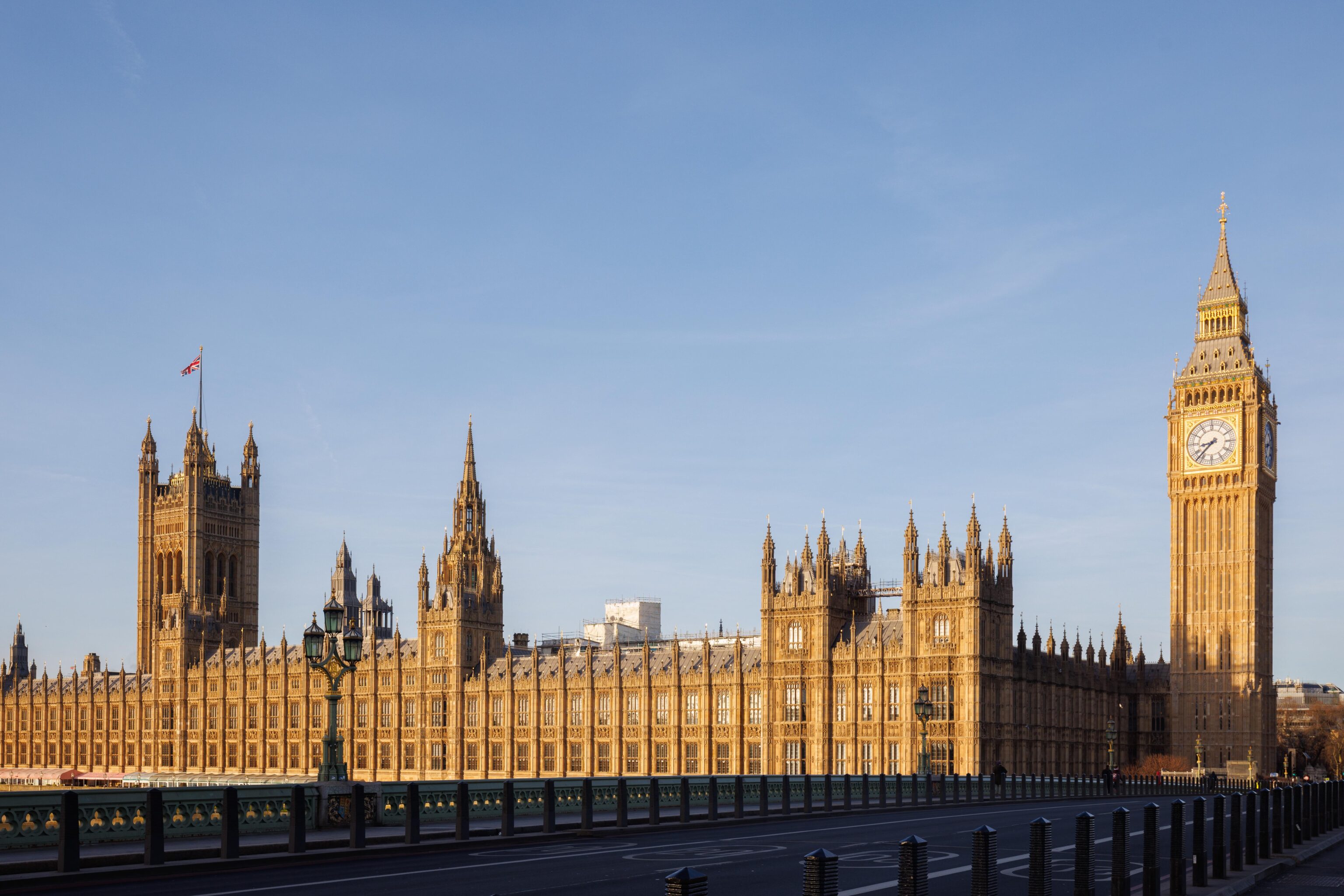
We crossed the Thames via the Westminster Bridge, getting closer to Big Ben as we went.
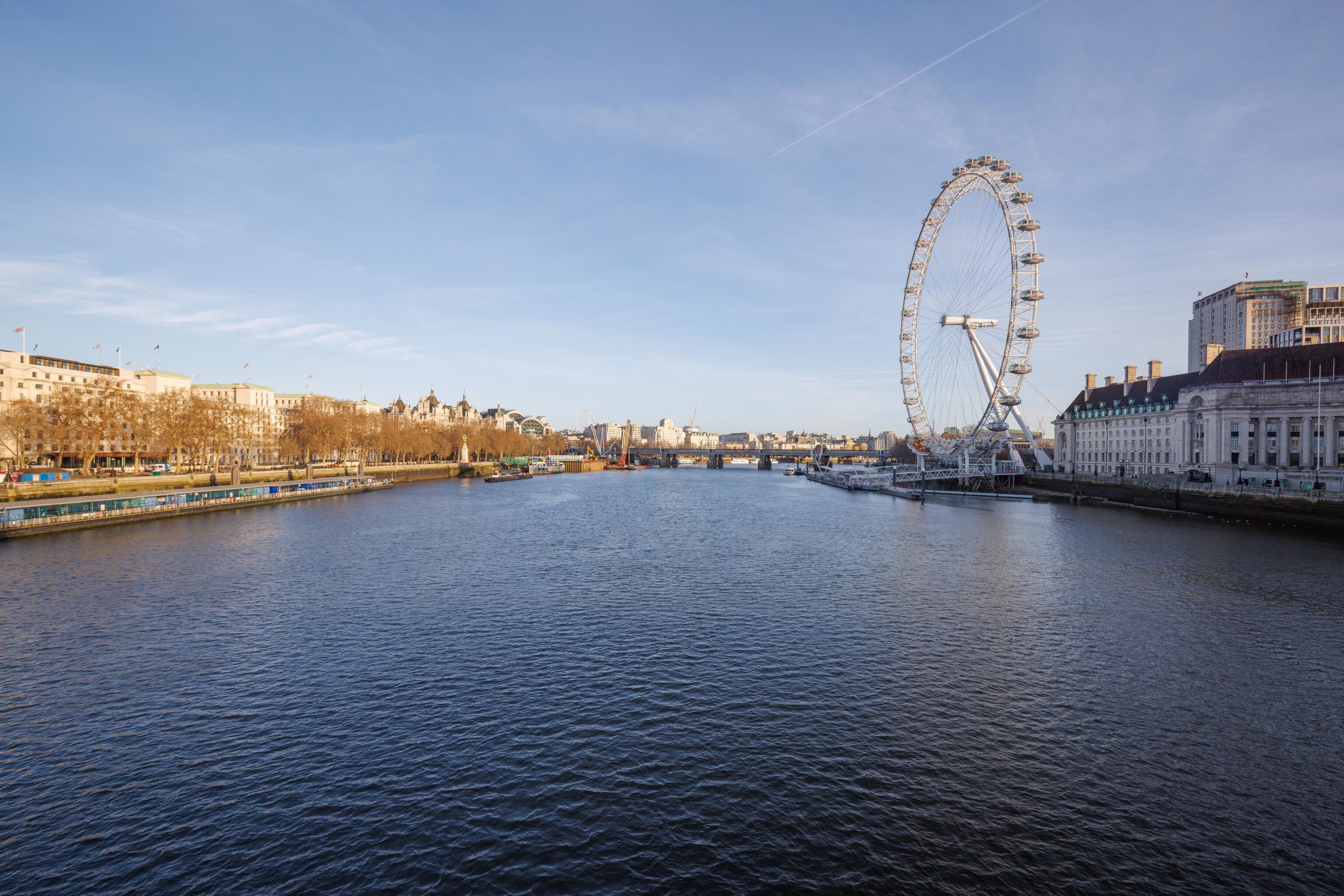
Looking to the north as we crossed, we saw the famous London Eye on the right.
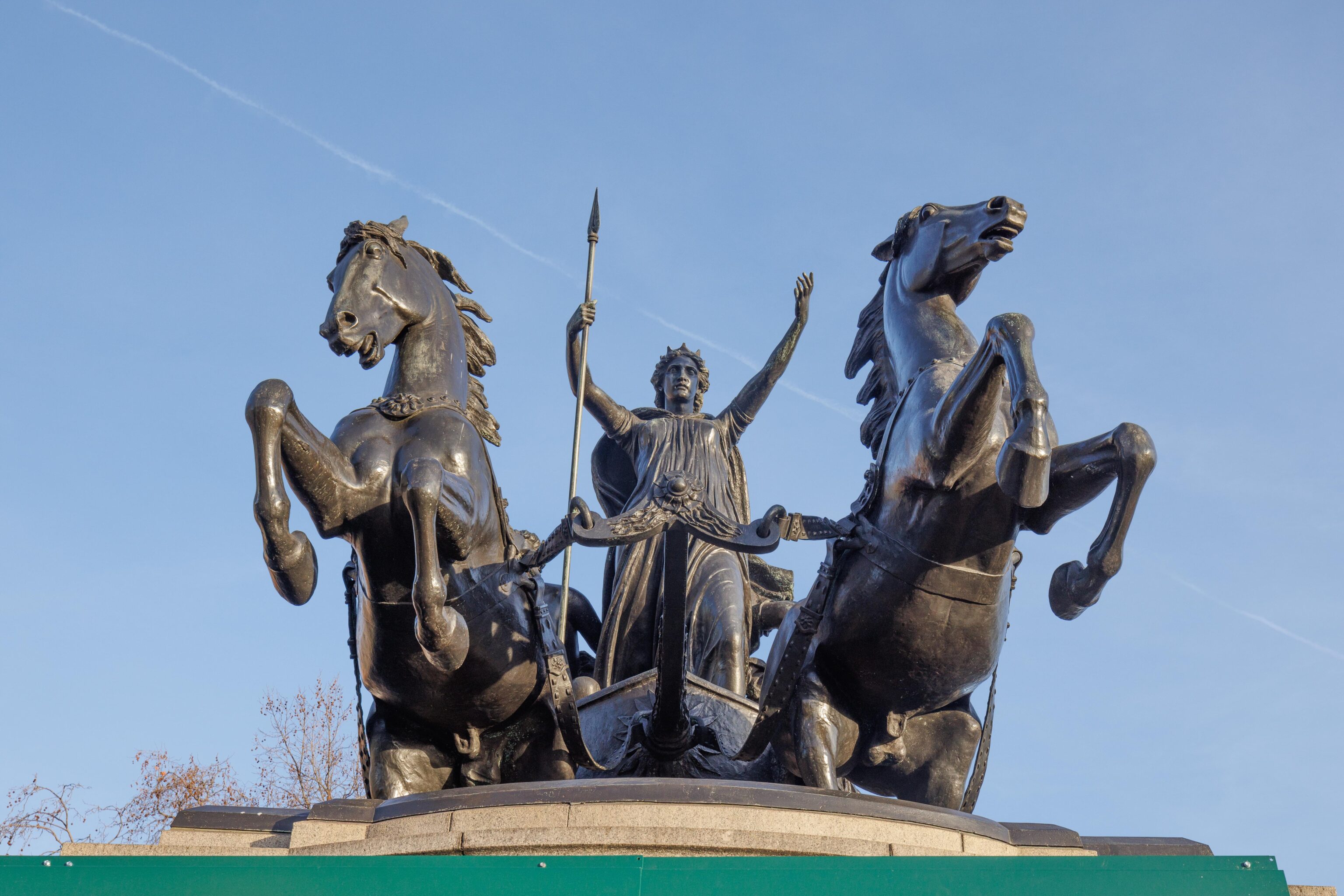
I’ve photographed this monument before, not knowing what it was for. Luckily, someone has added it to Google Maps. It represents the Boudiccan Rebellion, an uprising by Celtic tribes against the Roman Empire around 2000 years ago!
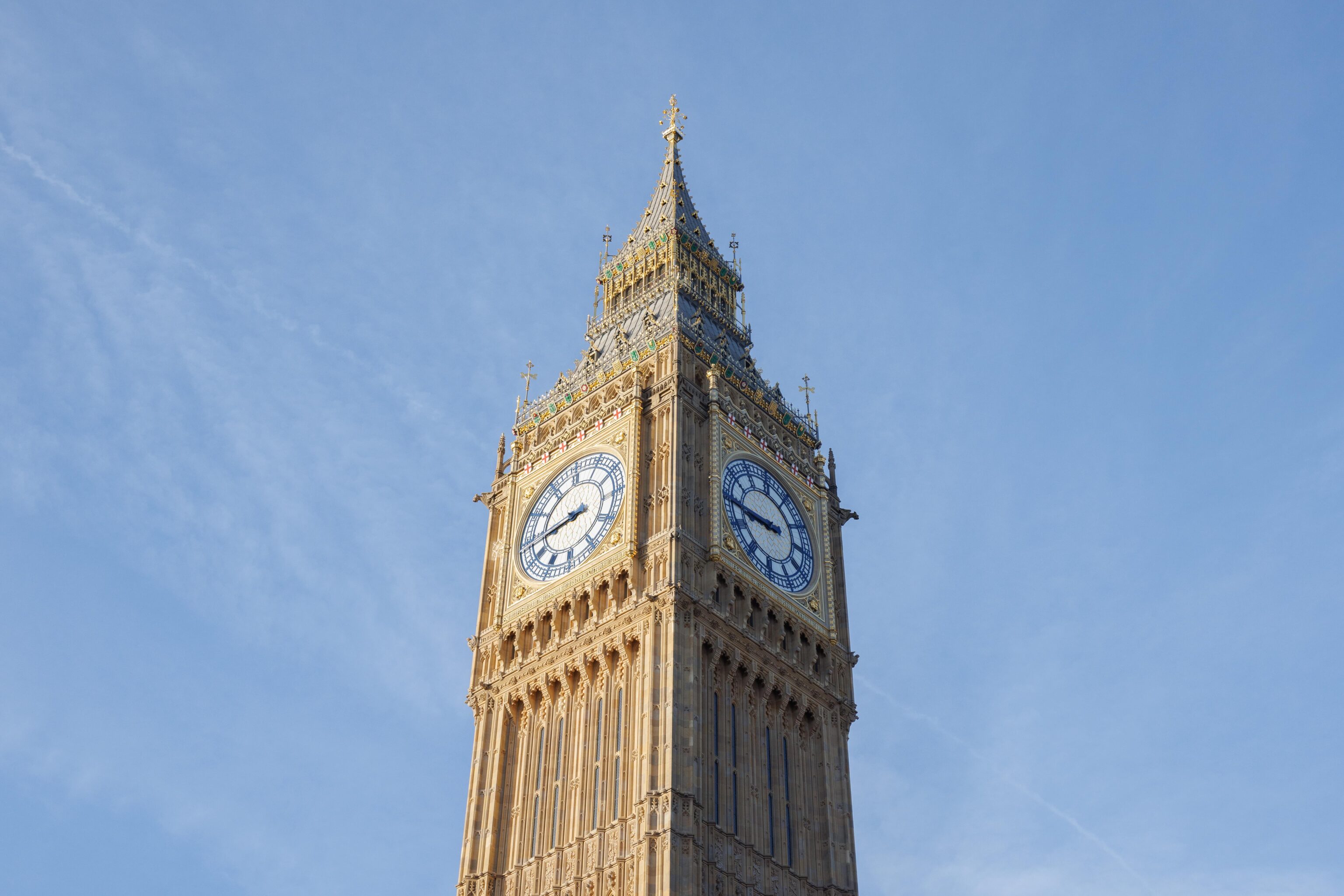
We continued onward, headed towards St. James Park. We took one final look at Big Ben atop Elizabeth Tower. The detailing on the structure is quite magnificent!
St. James Park
St. James park is just a block or two away from the Palace of Westminster, depending on exactly how you measure. As we headed into the park, we noticed a sign warning about avian flu. This may be the same outbreak that has resulted in the culling of a significant number of egg producing chickens back home in the US, resulting in extremely high prices.
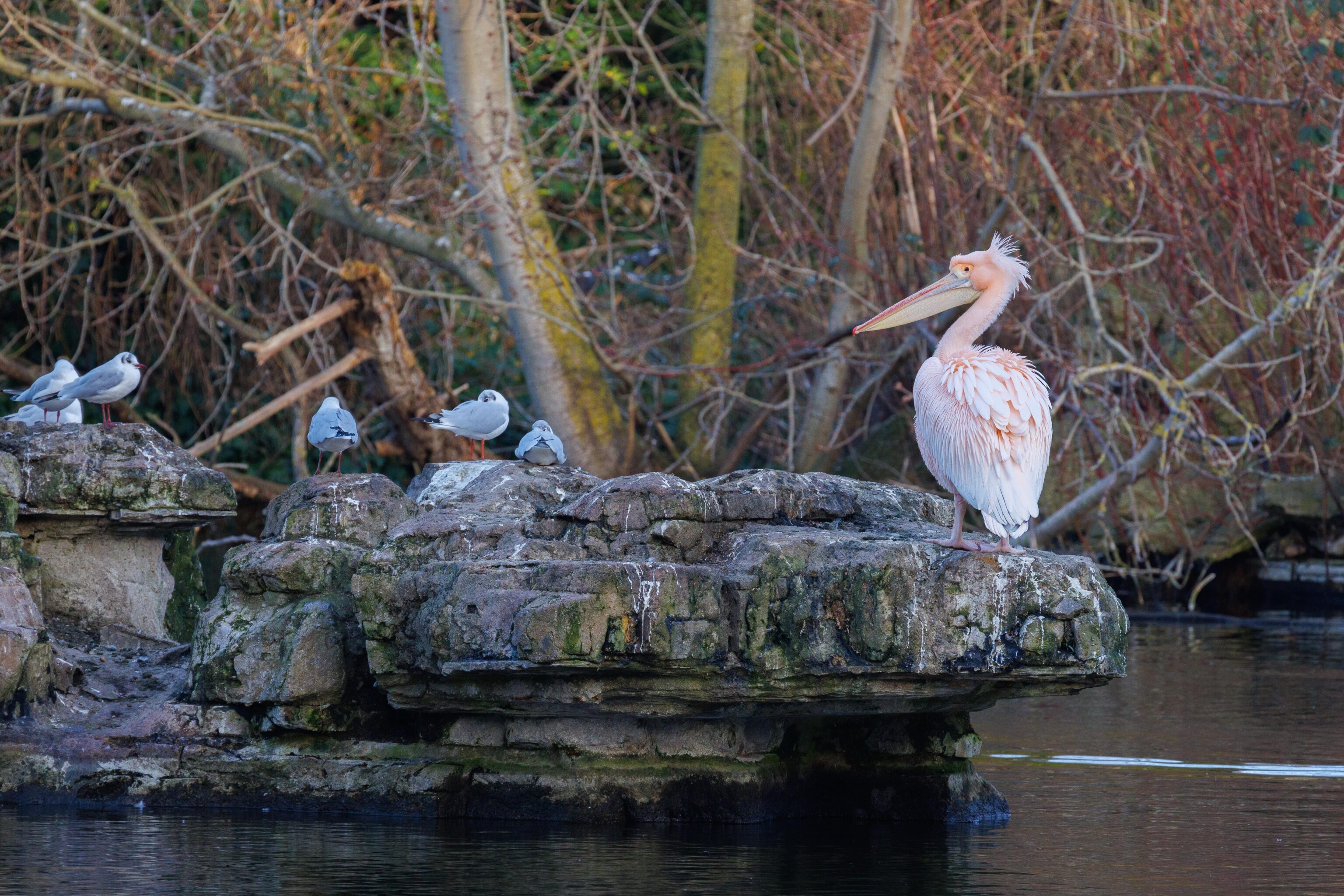
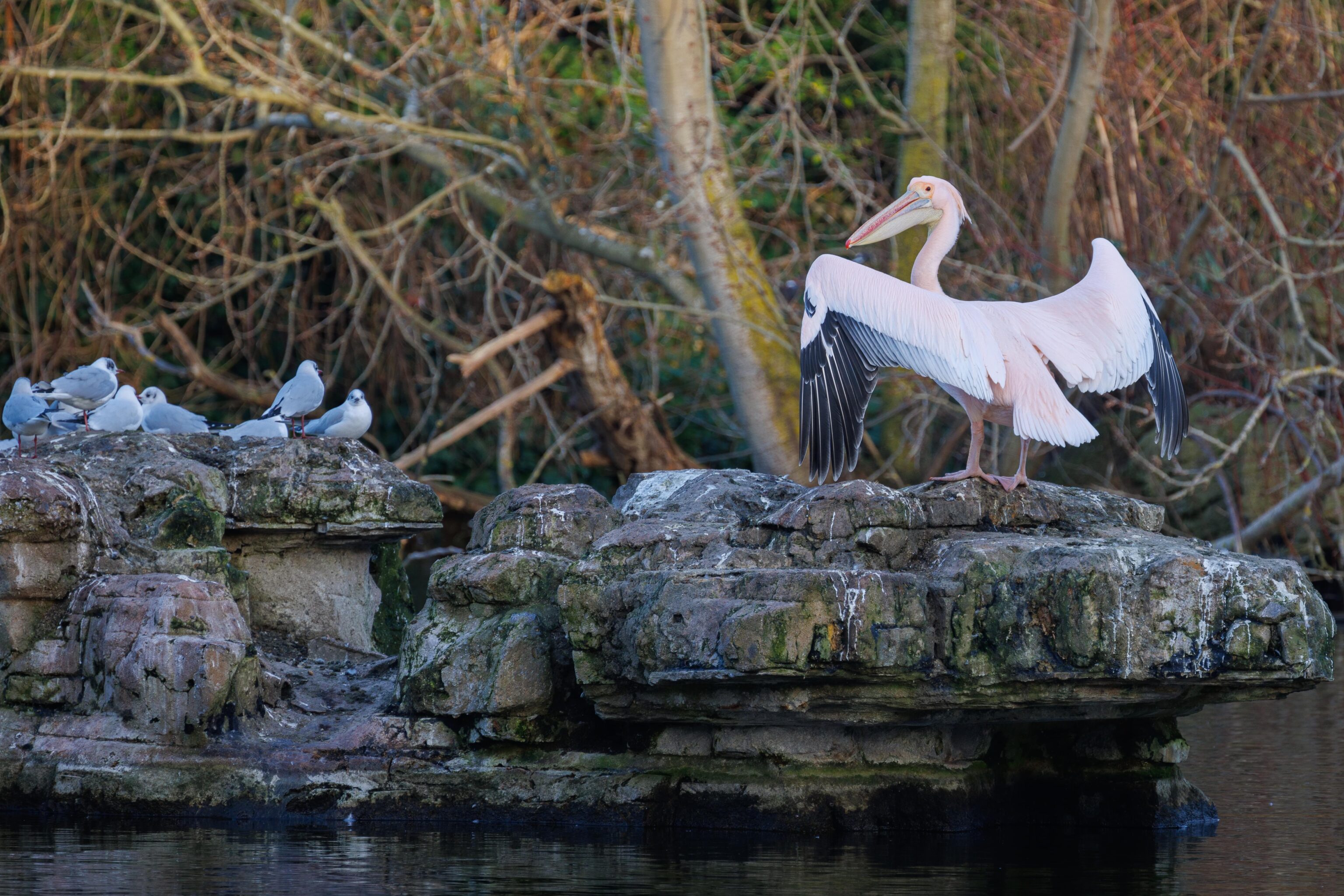
The sign mentioned something about pelicans, and indeed, we saw a Pelican almost right away! They are apparently descendants of pelicans that were gifts from the Russian Ambassador in 1664!
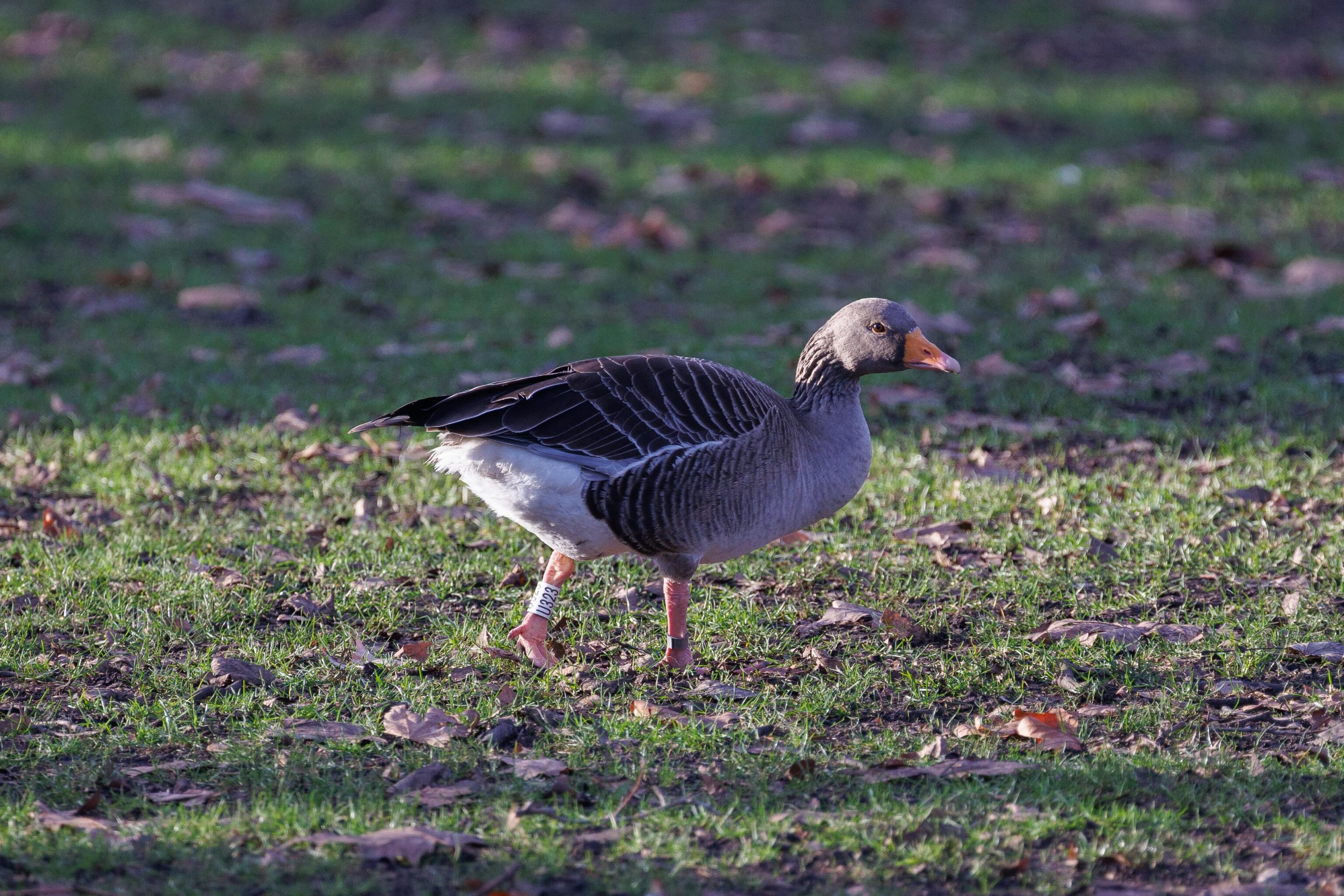
Although there are many birds here that are unfamiliar to us, we can often identify the general family that they belong to. There are quite a few Graylag Geese in the park.
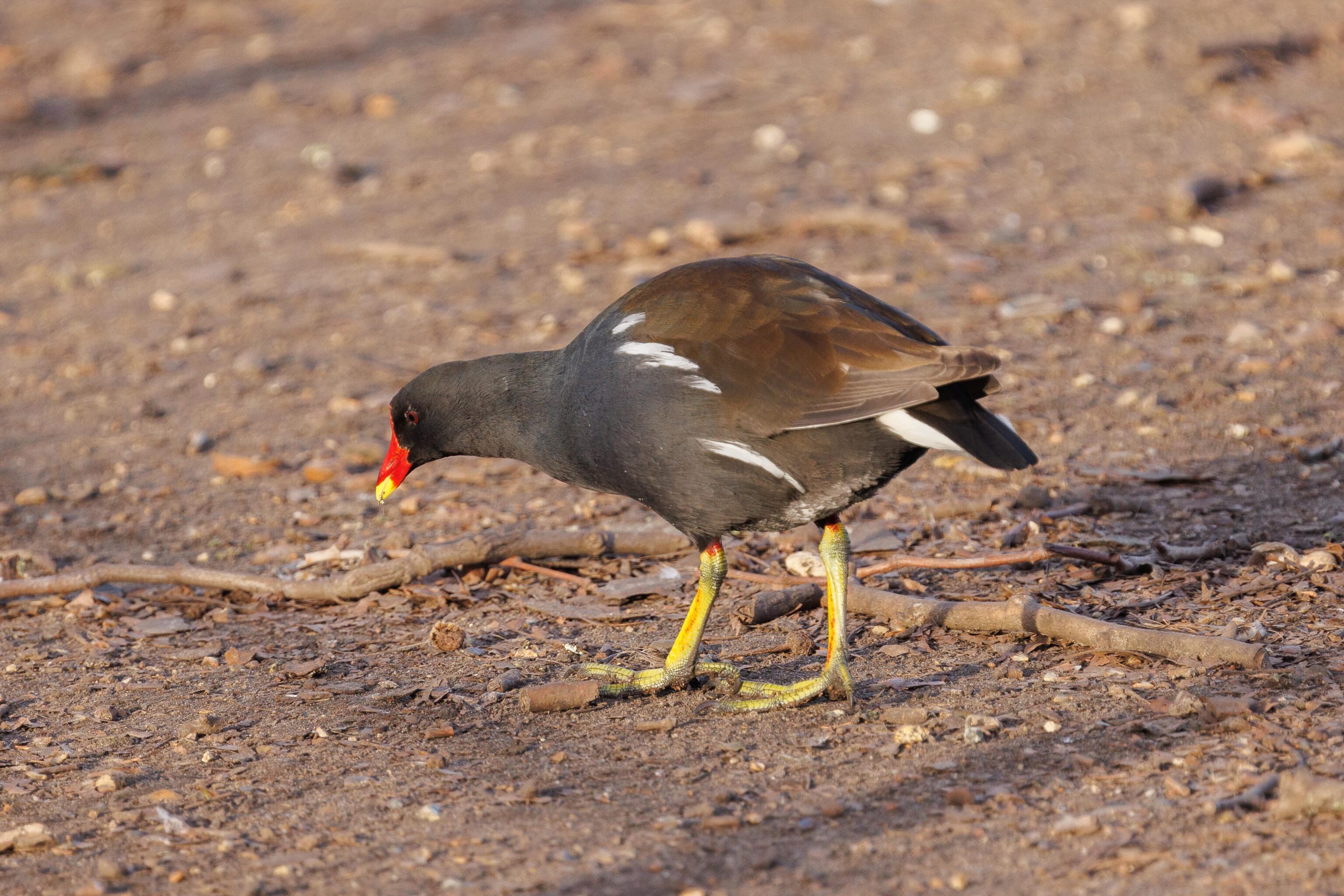
These birds seem to behave a bit like chickens. They are Eurasian Moorhen, described by Cornell’s eBird as “resembles a cross between a duck and a chicken.”
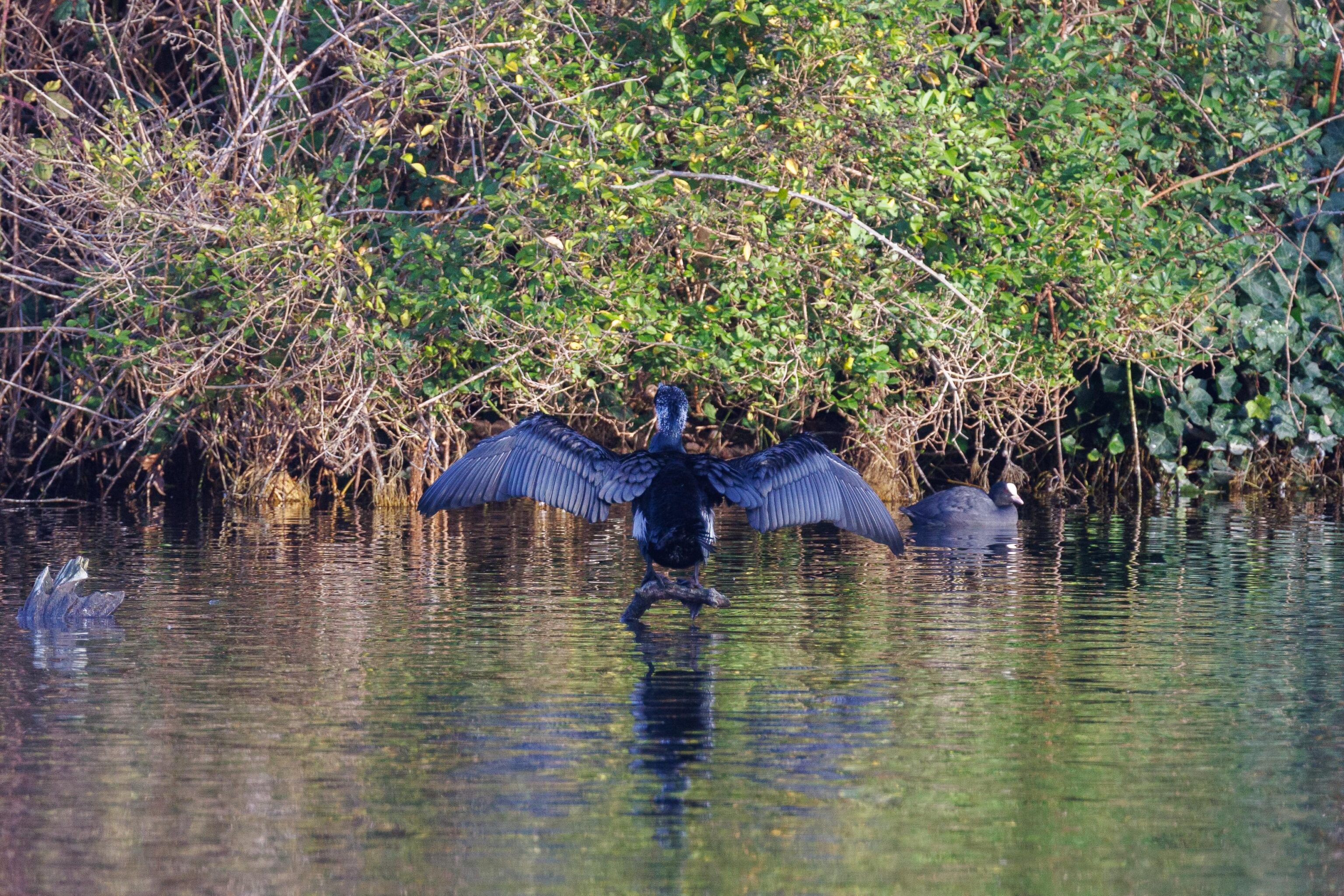
This bird with outstretched wings appears to be a Great Cormorant. Our local cormorants back home also do this to warm themselves in the sun.
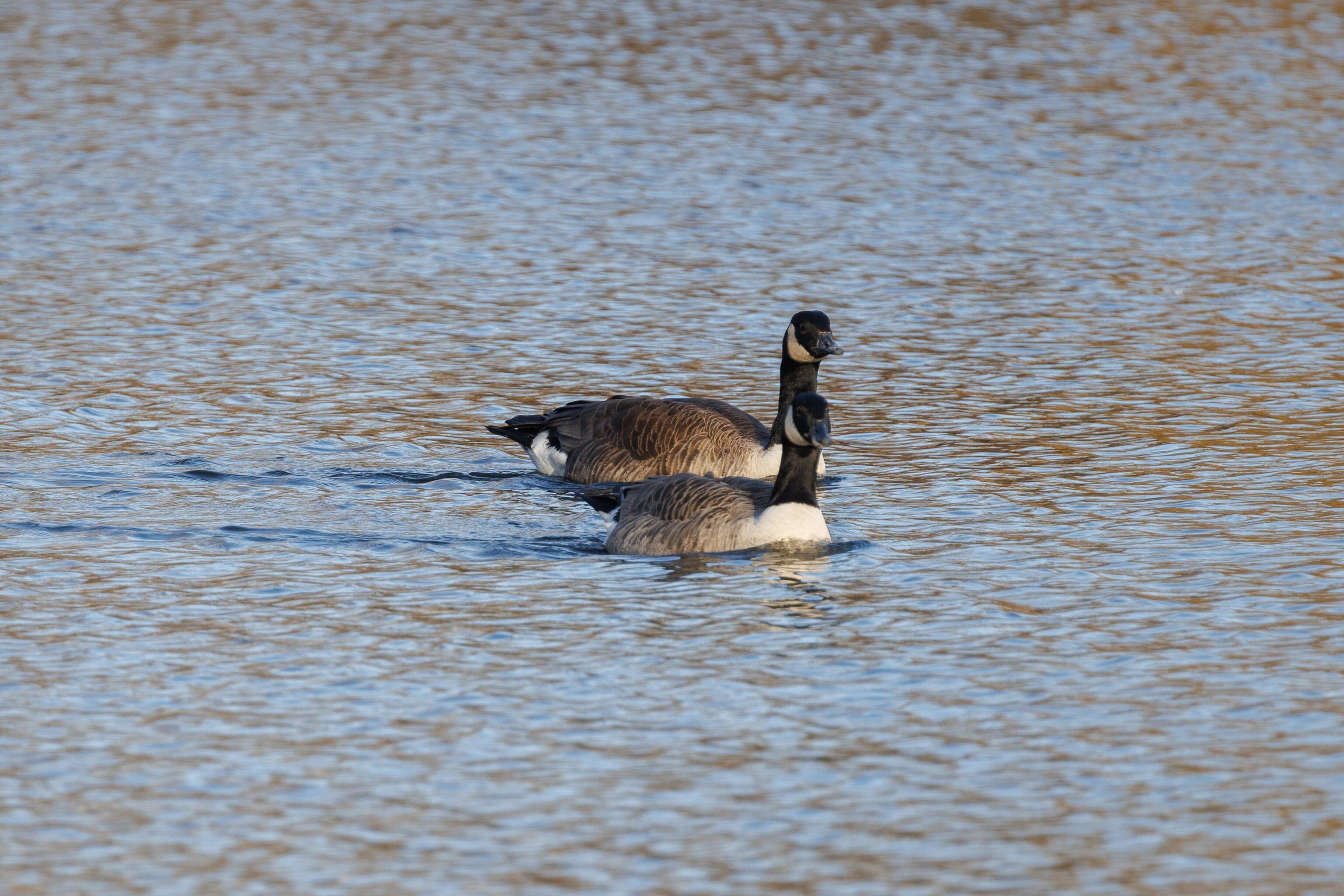
We weren’t sure at the time, but these appear to be Canada Geese. Apparently they were introduced into Europe at some point. One of the downsides of the empire?
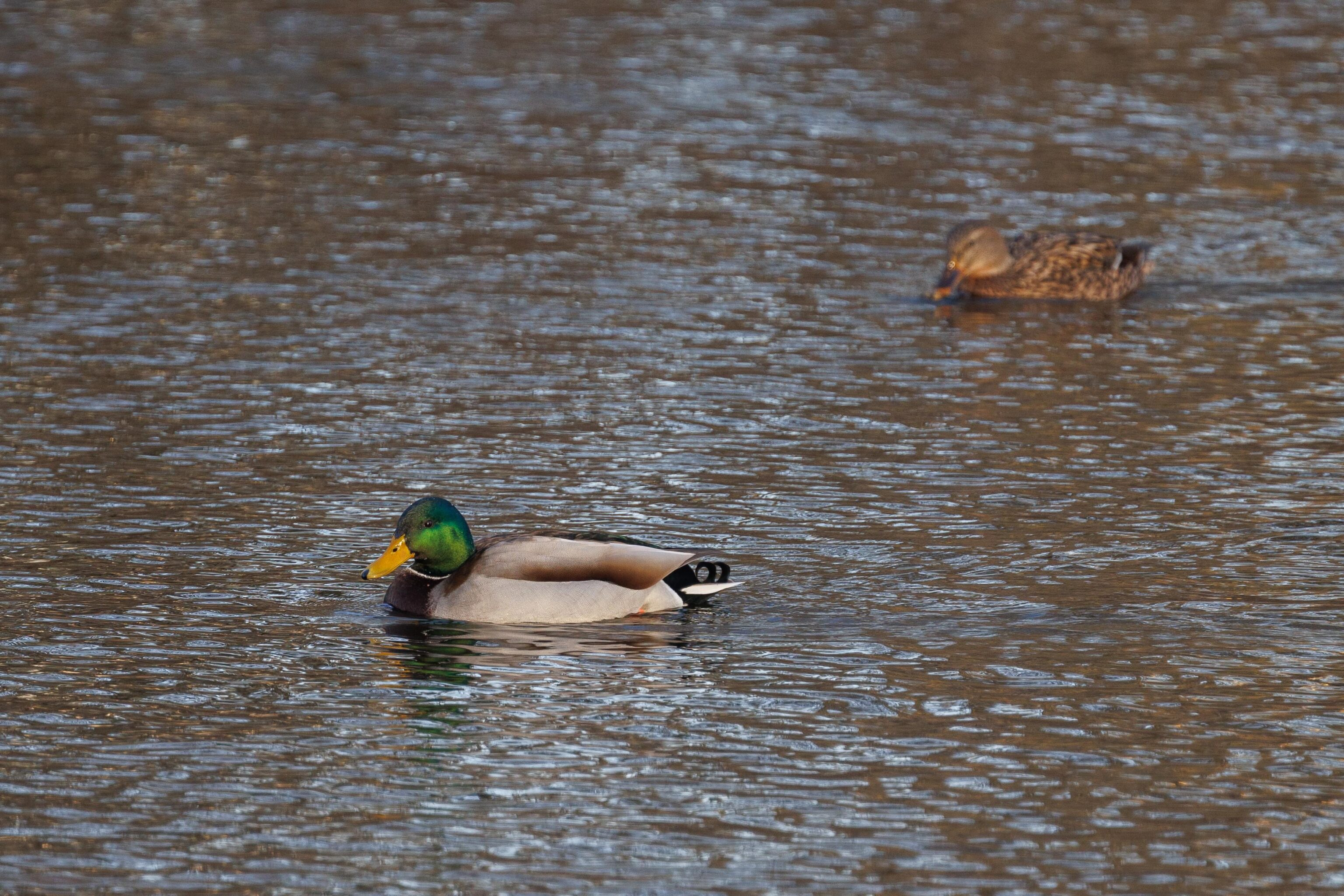
We also noticed Mallards, a species that is very common back home.
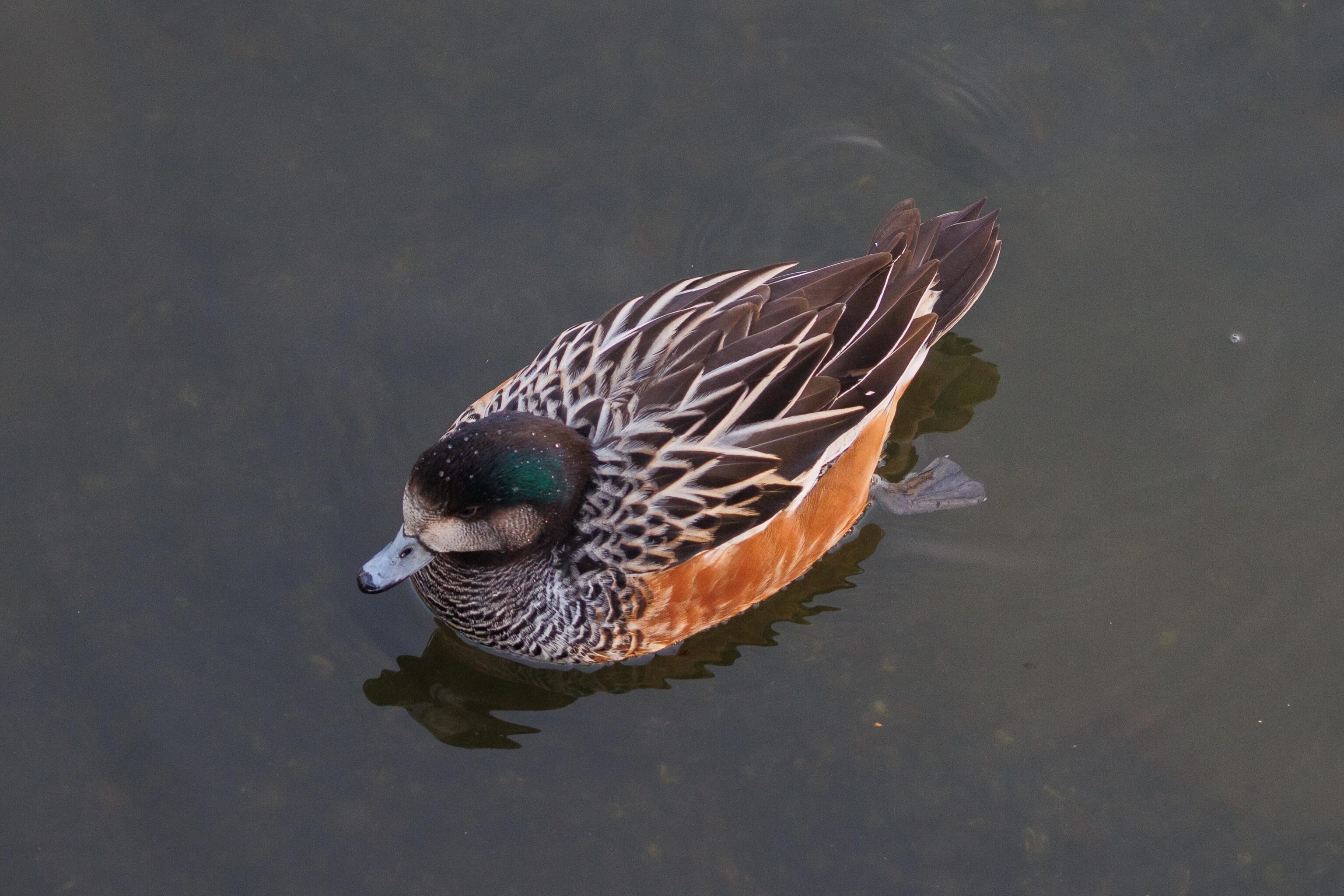
We also saw Chiloé Wigeons, a non-native species here in London.
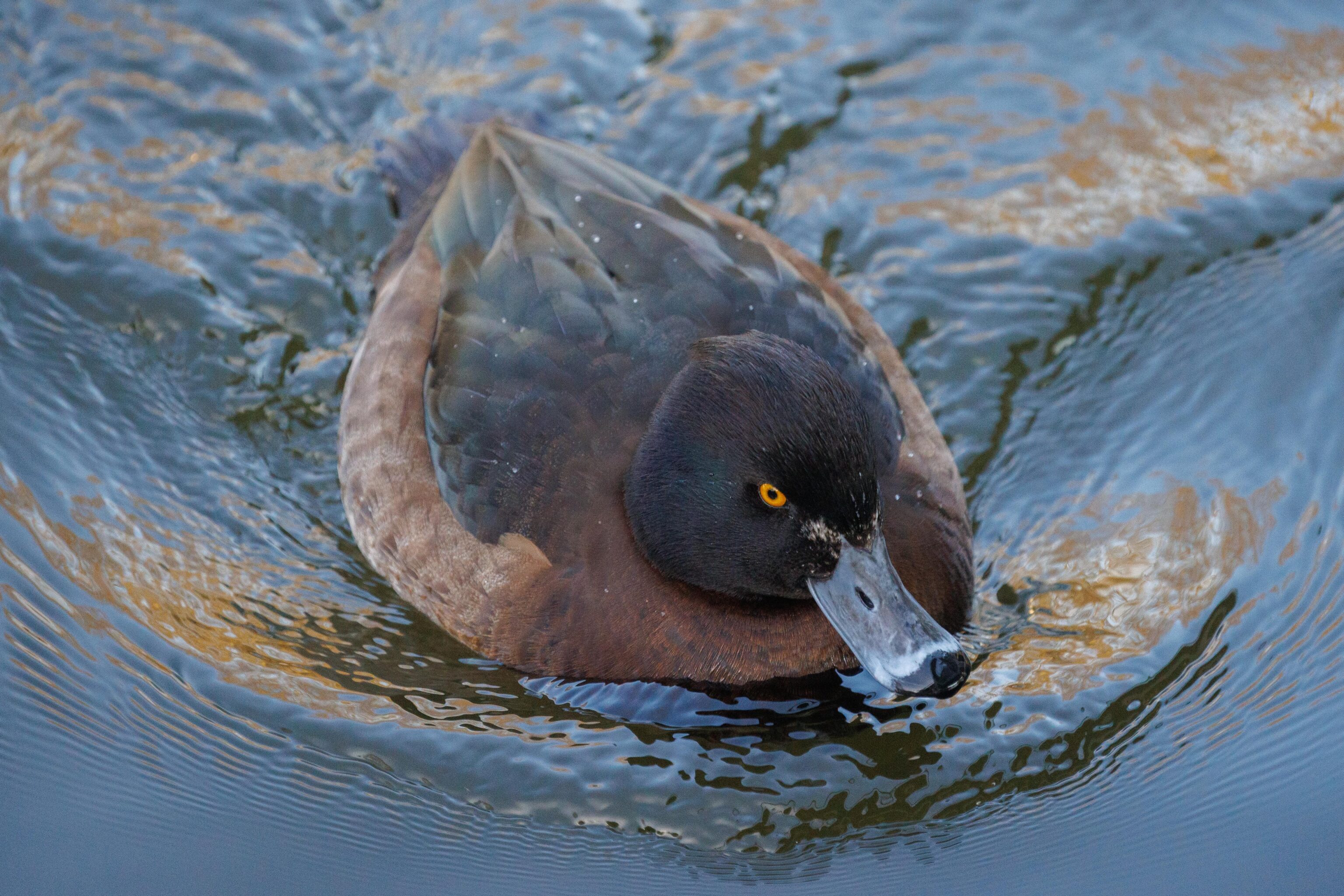
This appears to be a Tufted Duck, perhaps an immature male.
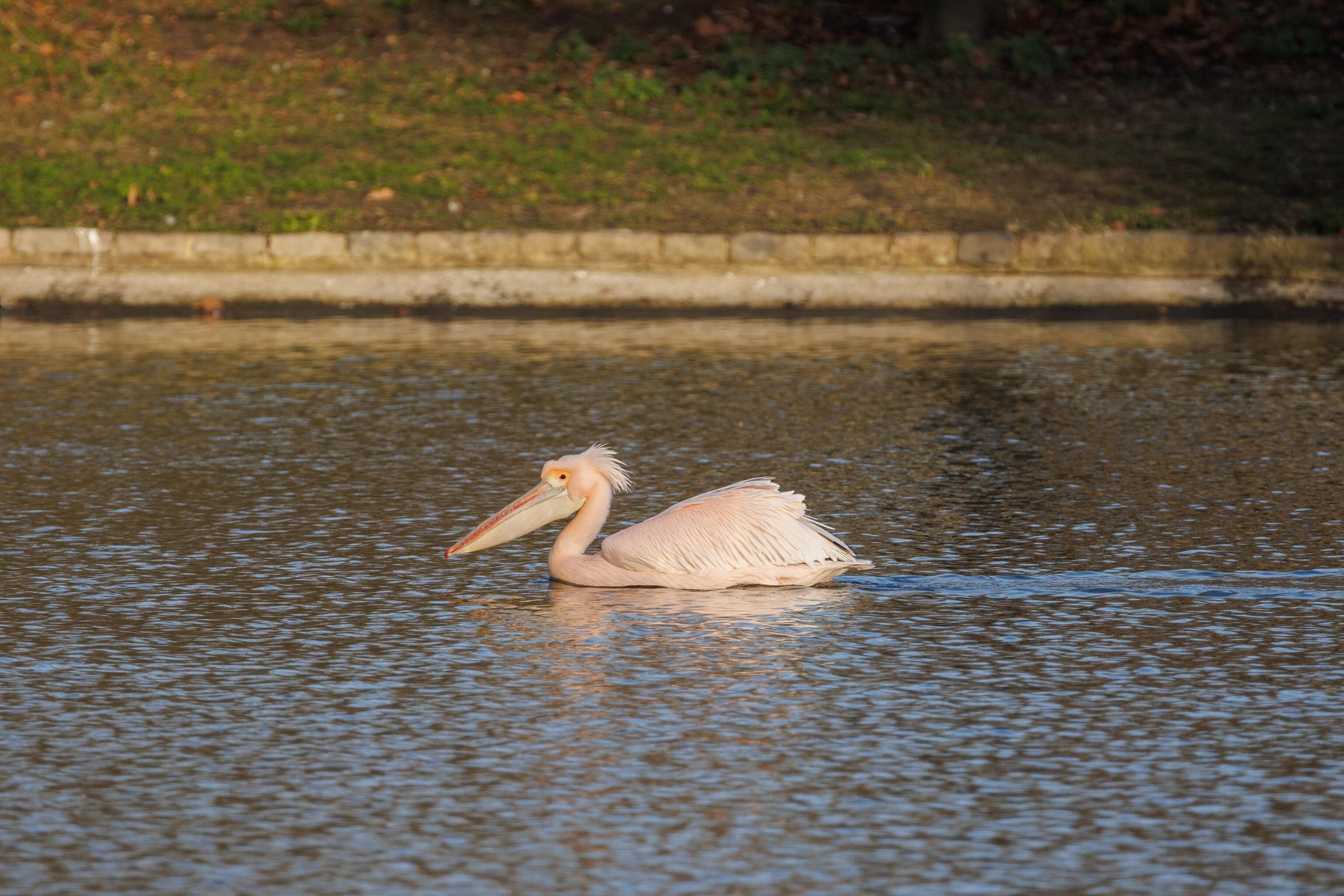
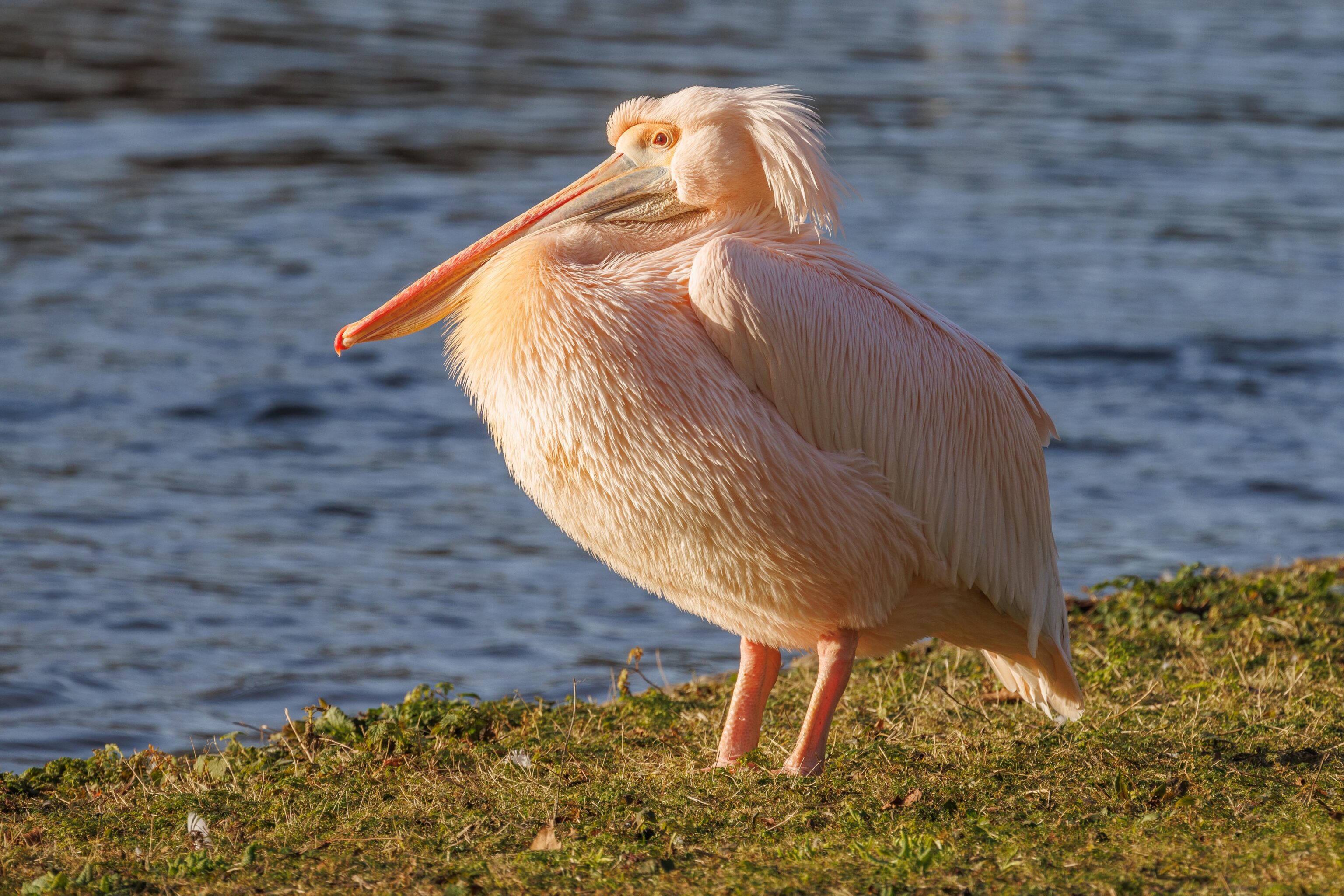
We came across more Pelicans as we walked through the park. Though based on our observations, they could all be the same individual.
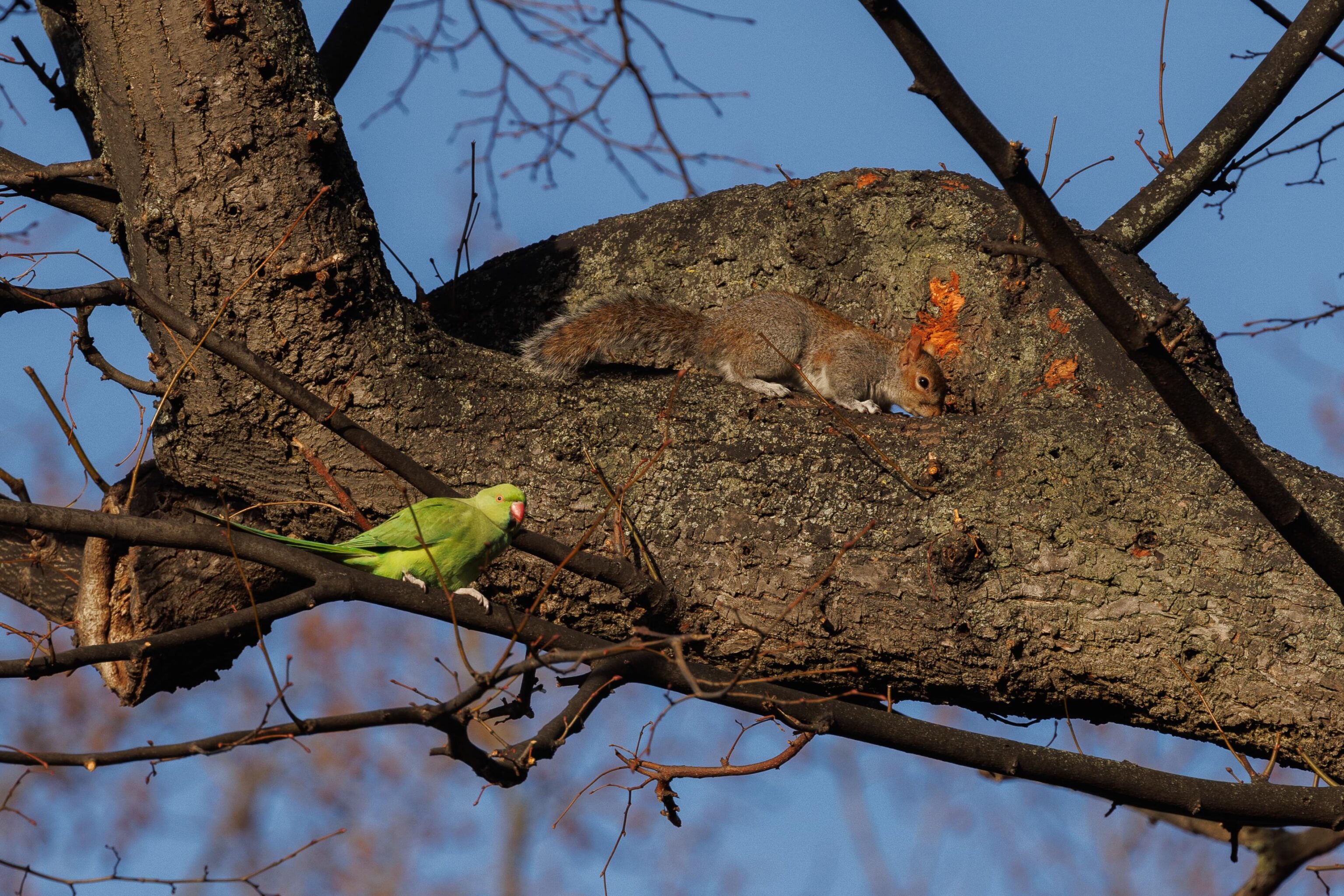
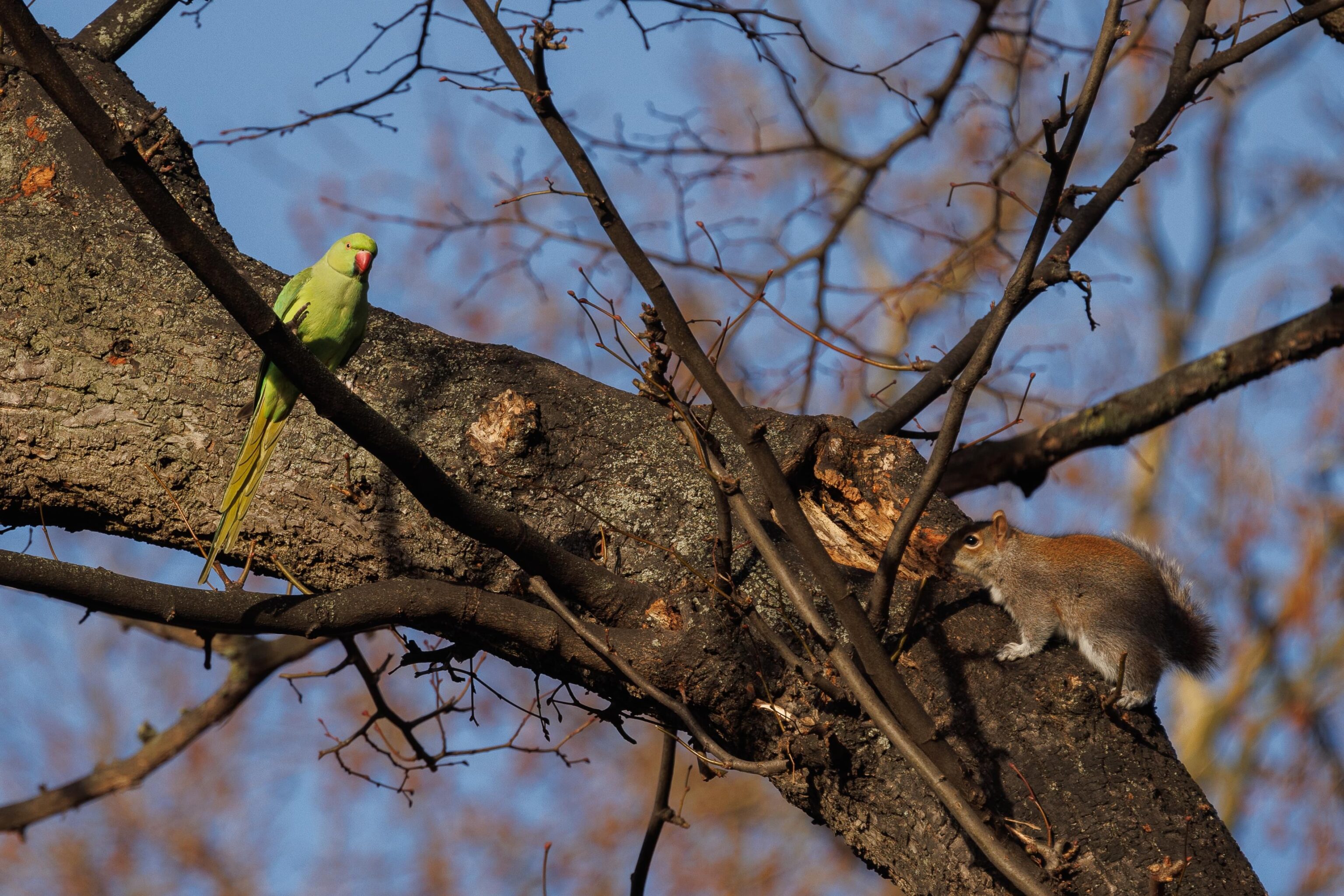
We also noticed something interesting! There are parakeets here! Rose-Ringed Parakeets! They are an introduced species according to eBird. This individual appeared to be playing with the squirrels, though harassing might be a better term.
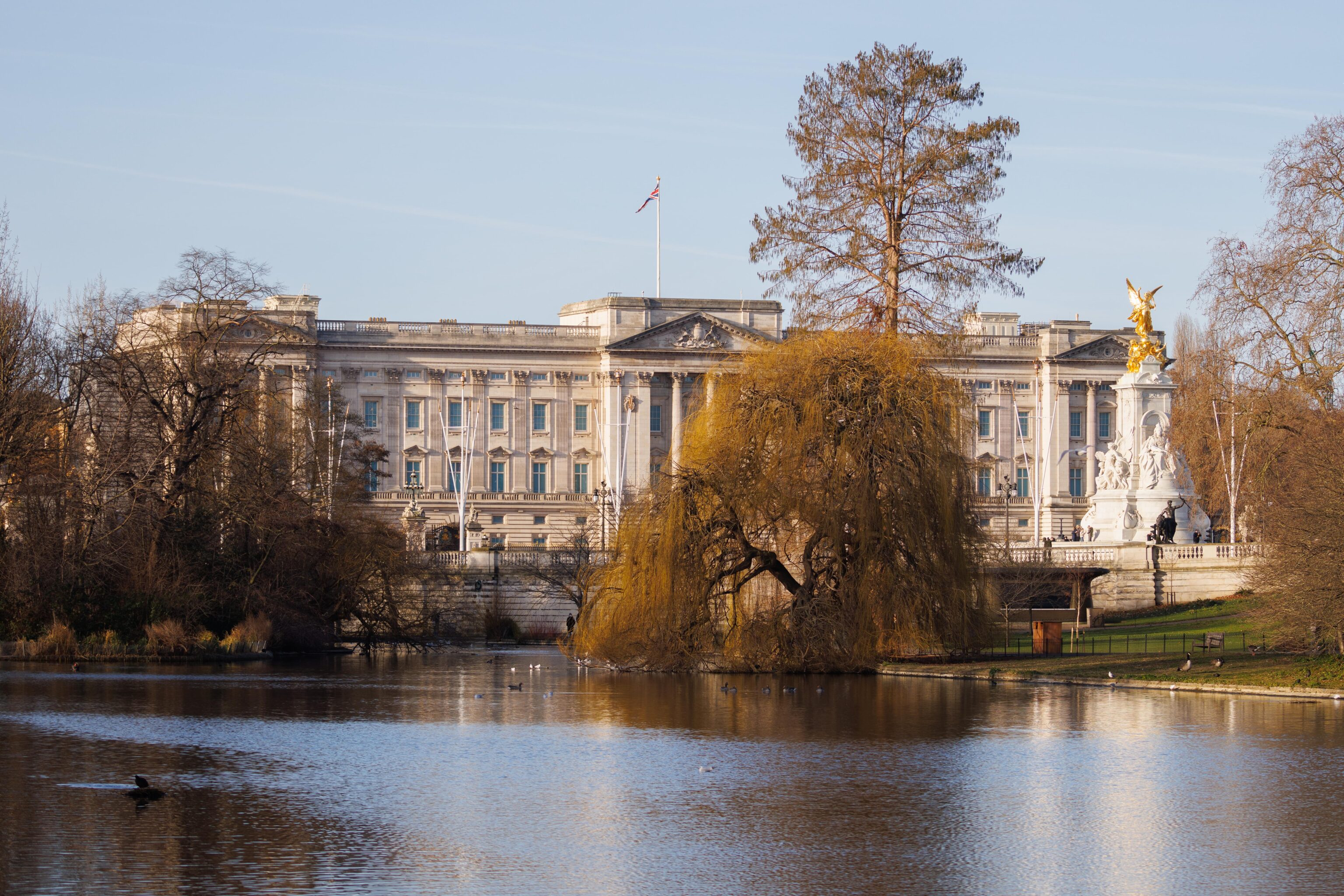
St. James Park isn’t particularly scenic when there aren’t leaves on the trees. But it does offer a nice view of Buckingham Palace.
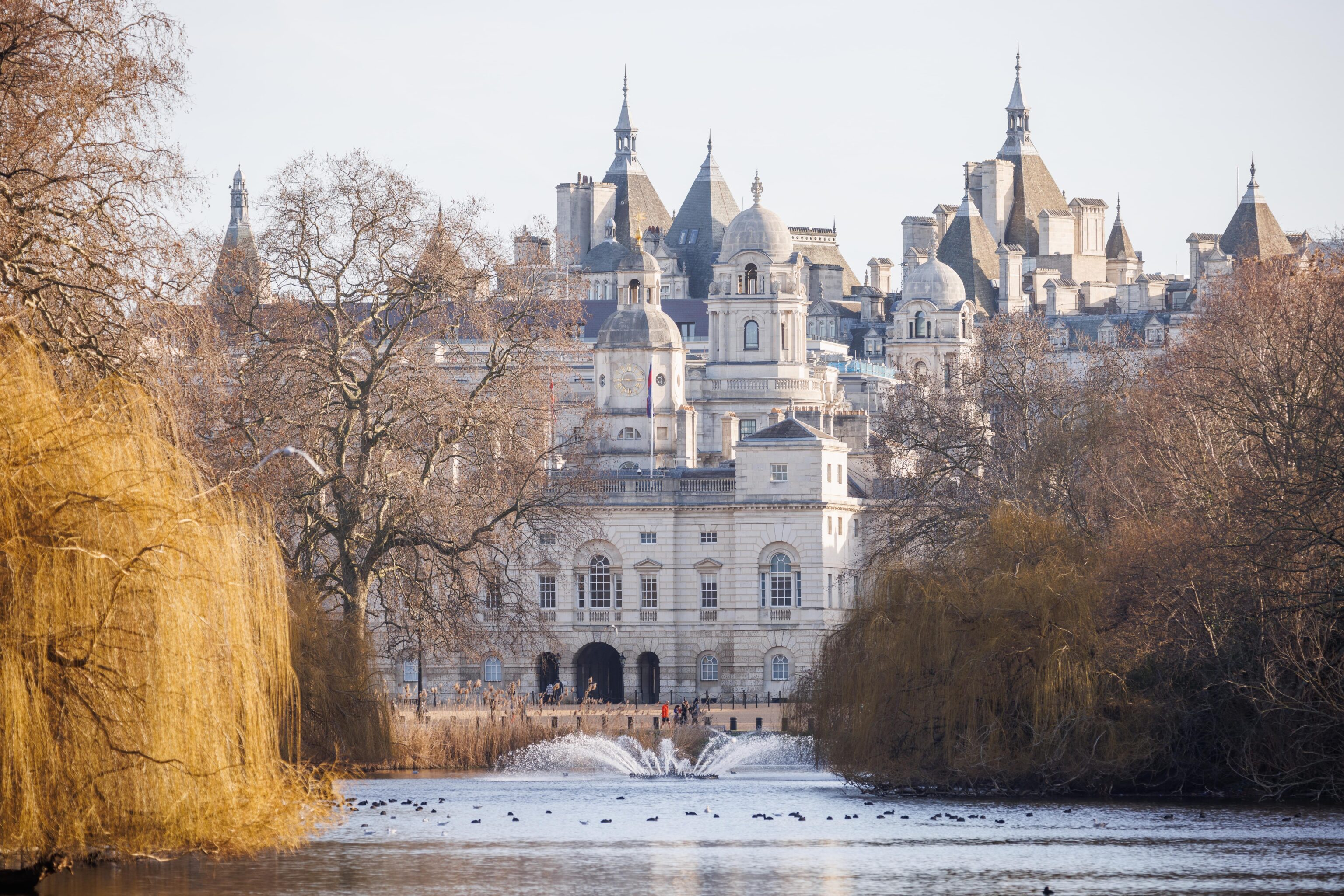
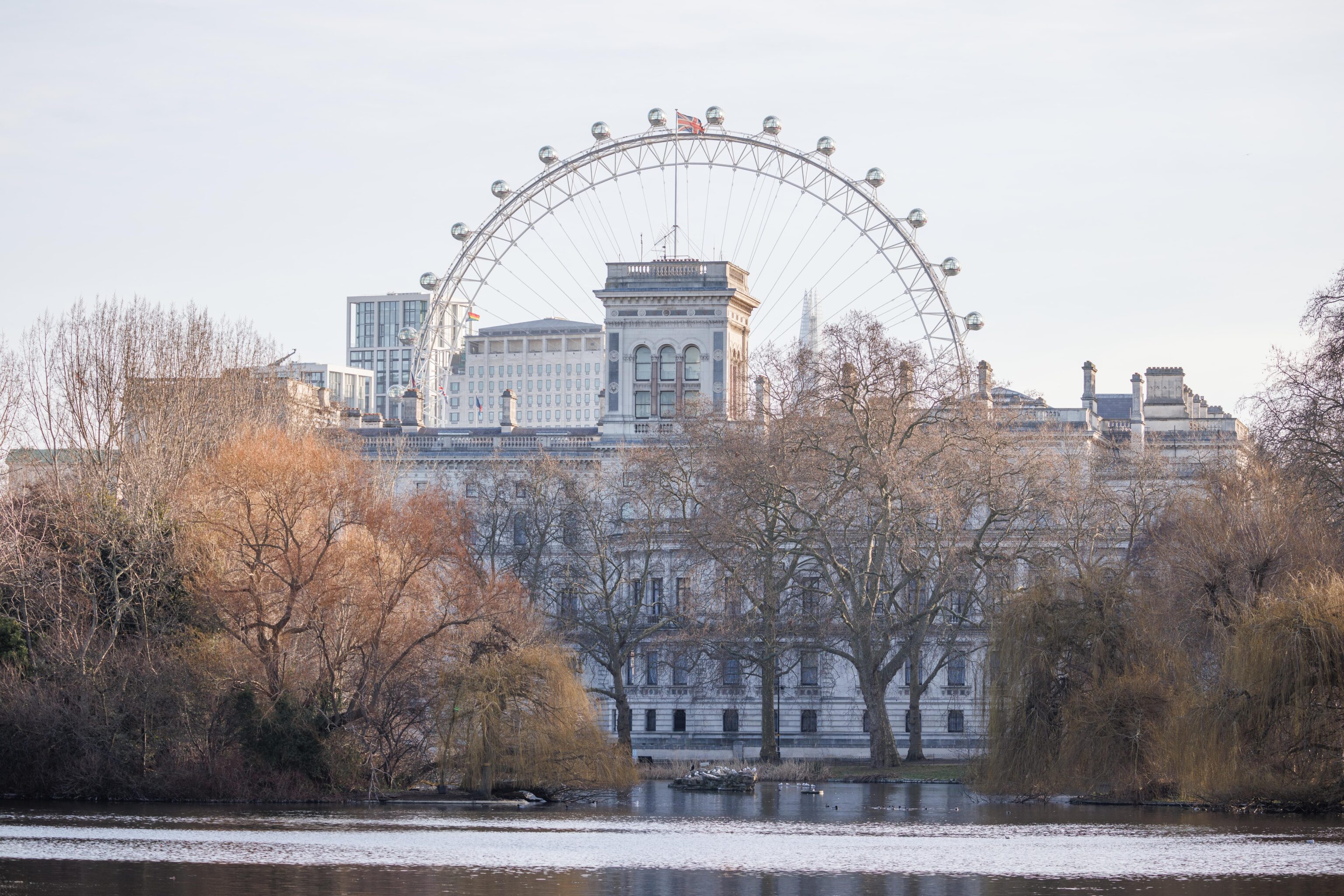
There are equally nice views in the opposite direction.
Buckingham Palace
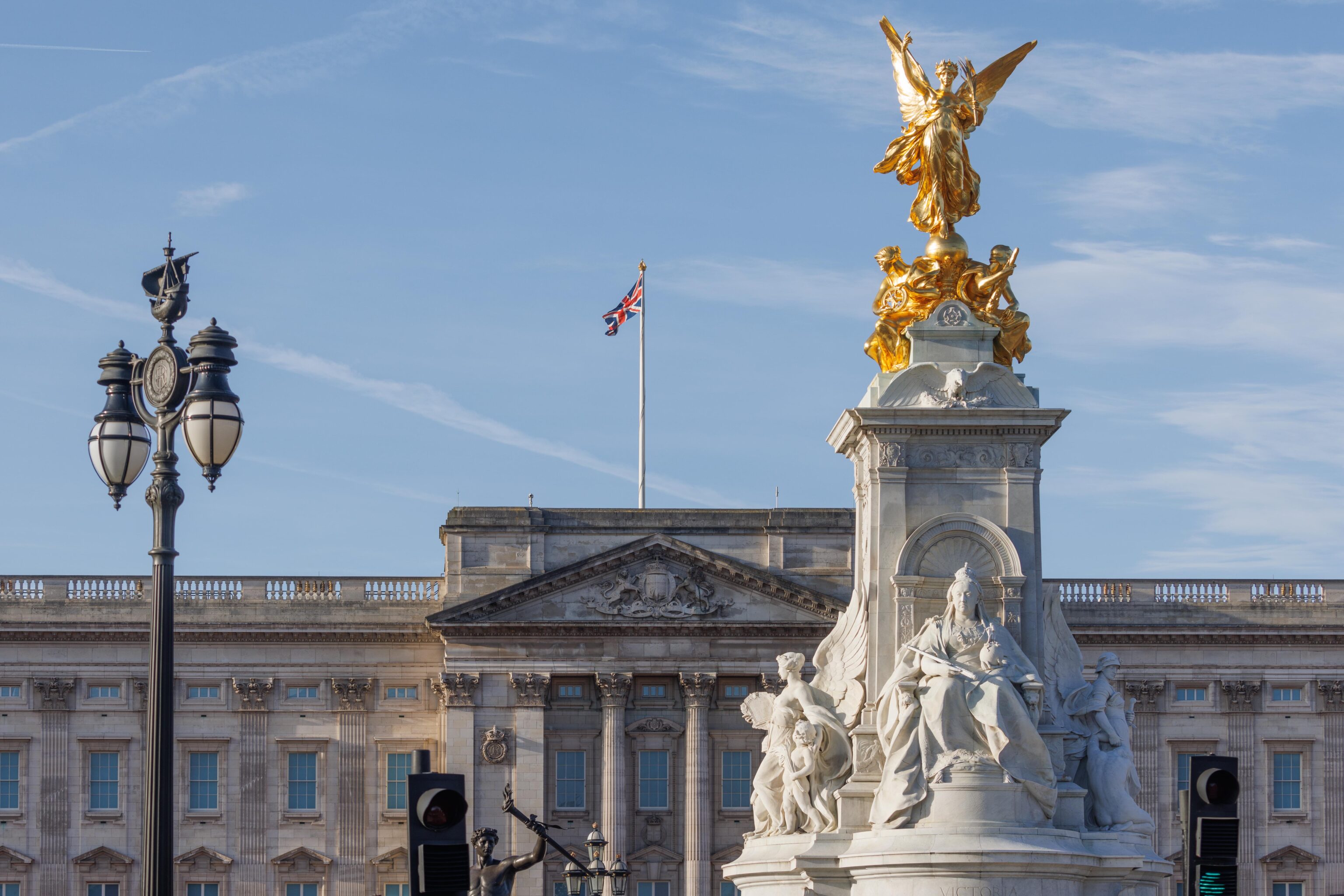
We left the park and crossed the street, headed towards Buckingham Palace.
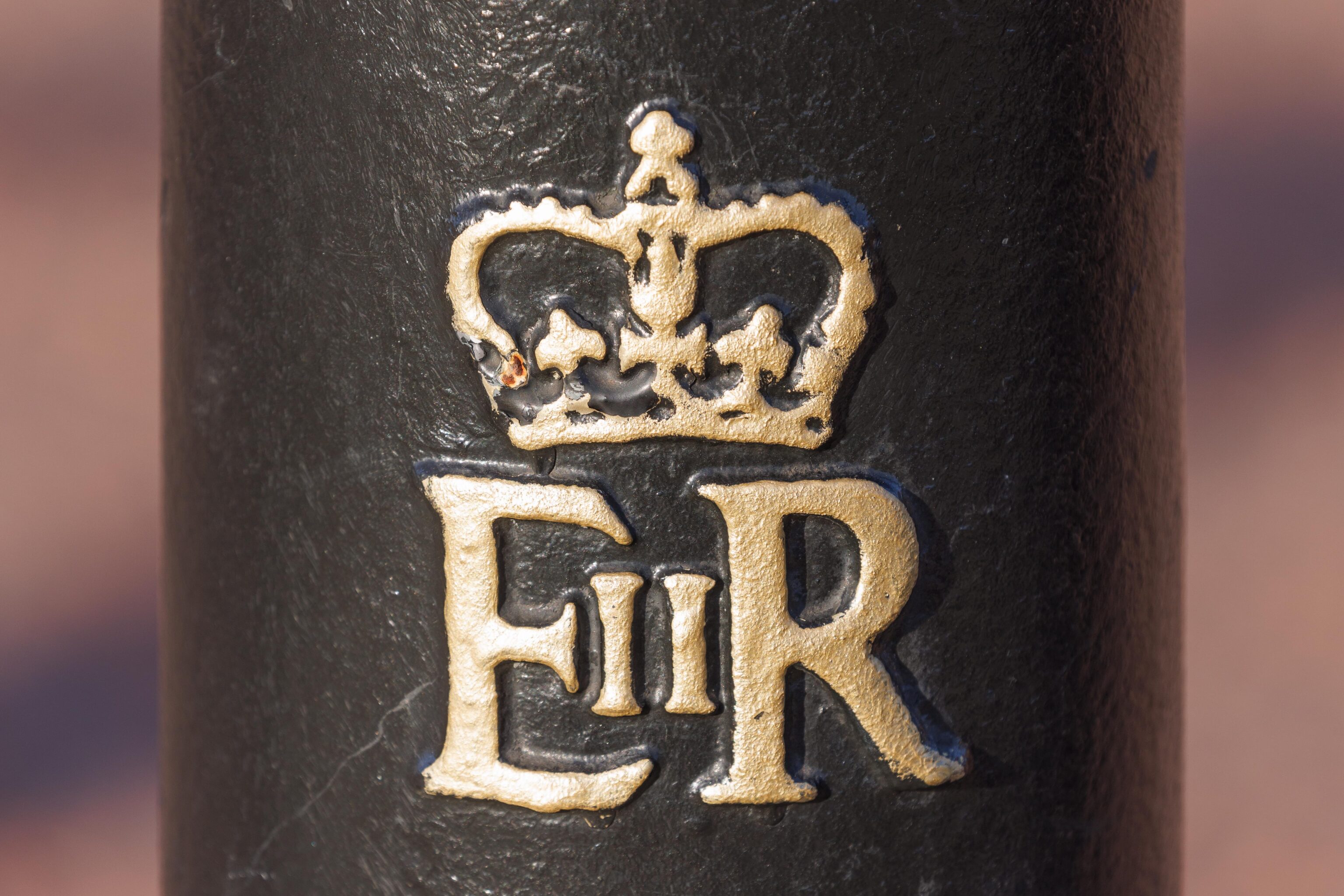
There are many signs of the late Queen throughout London. Not sure what the protocol is for replacing these sorts of things or if they simply remain.
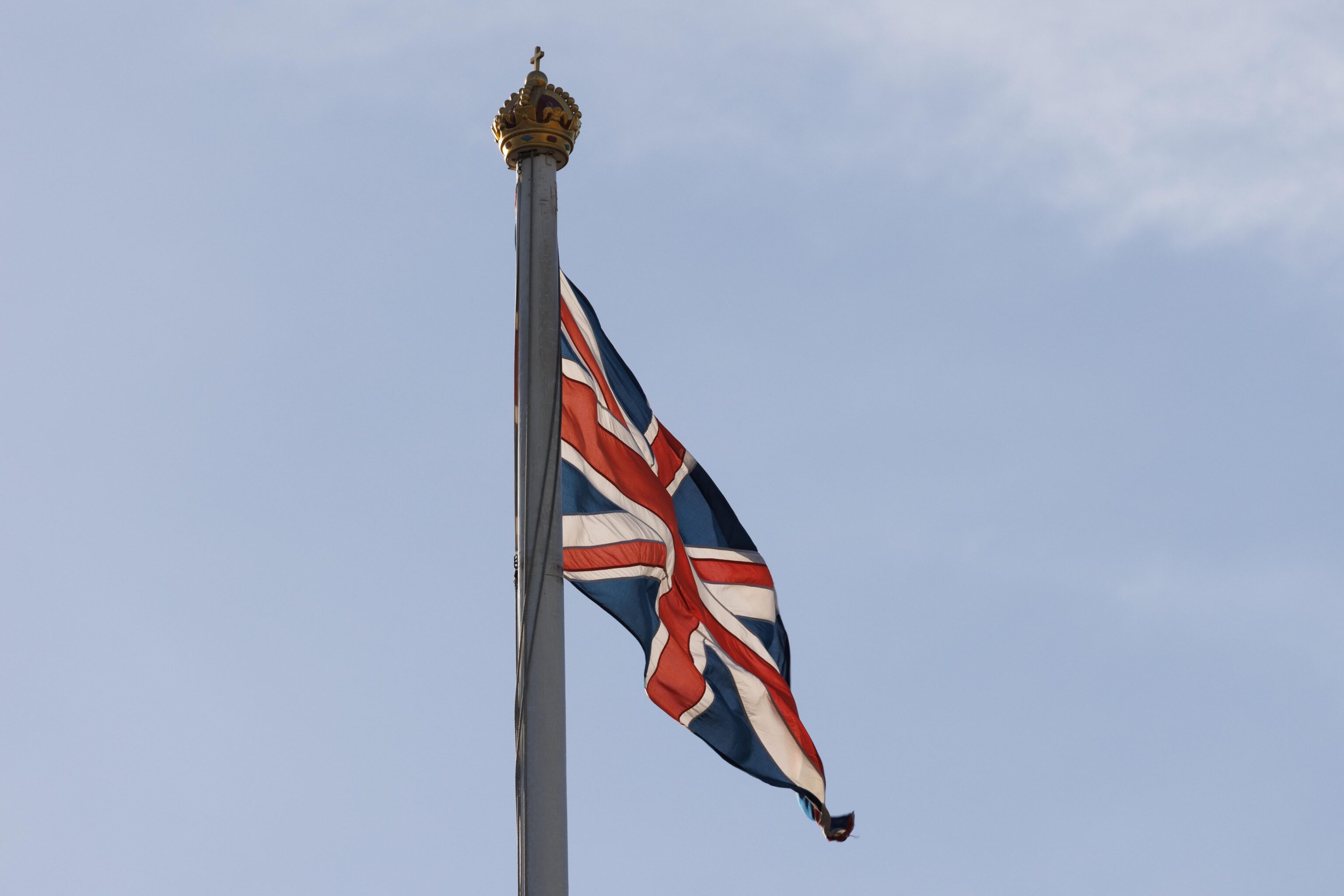
The King was not present as the UK flag was flying atop Buckingham Palace rather than the Royal Standard.
There were already many people lining the fence around Buckingham Palace. We ended up walking down a bit to the side of the property for a clear view. Unfortunately, that meant we were looking into the sun.
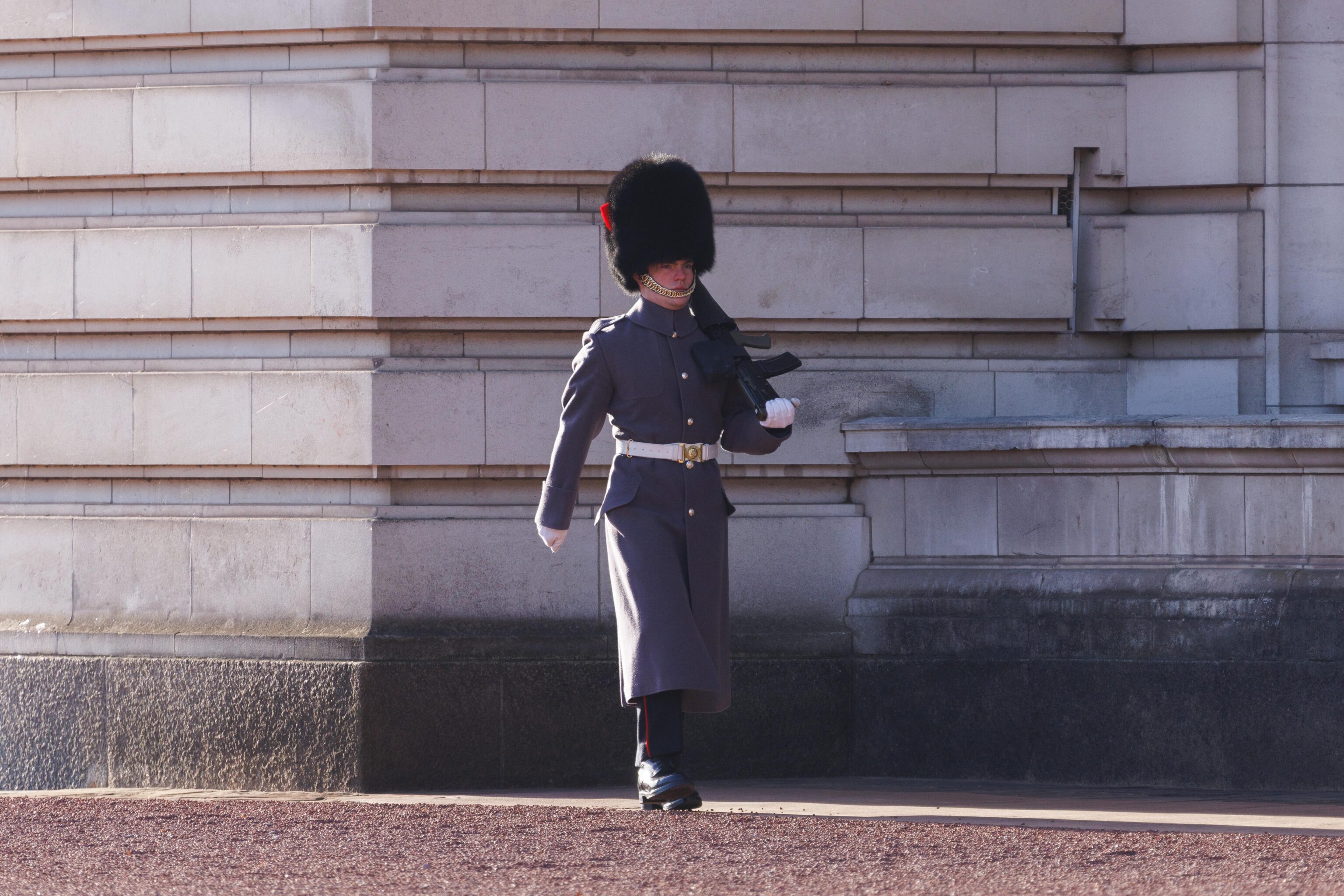
It often isn’t really clear why the guards do what they do. There were two guards on duty in front of the palace. They usually stood in place but would occasionally march a bit before turning back.
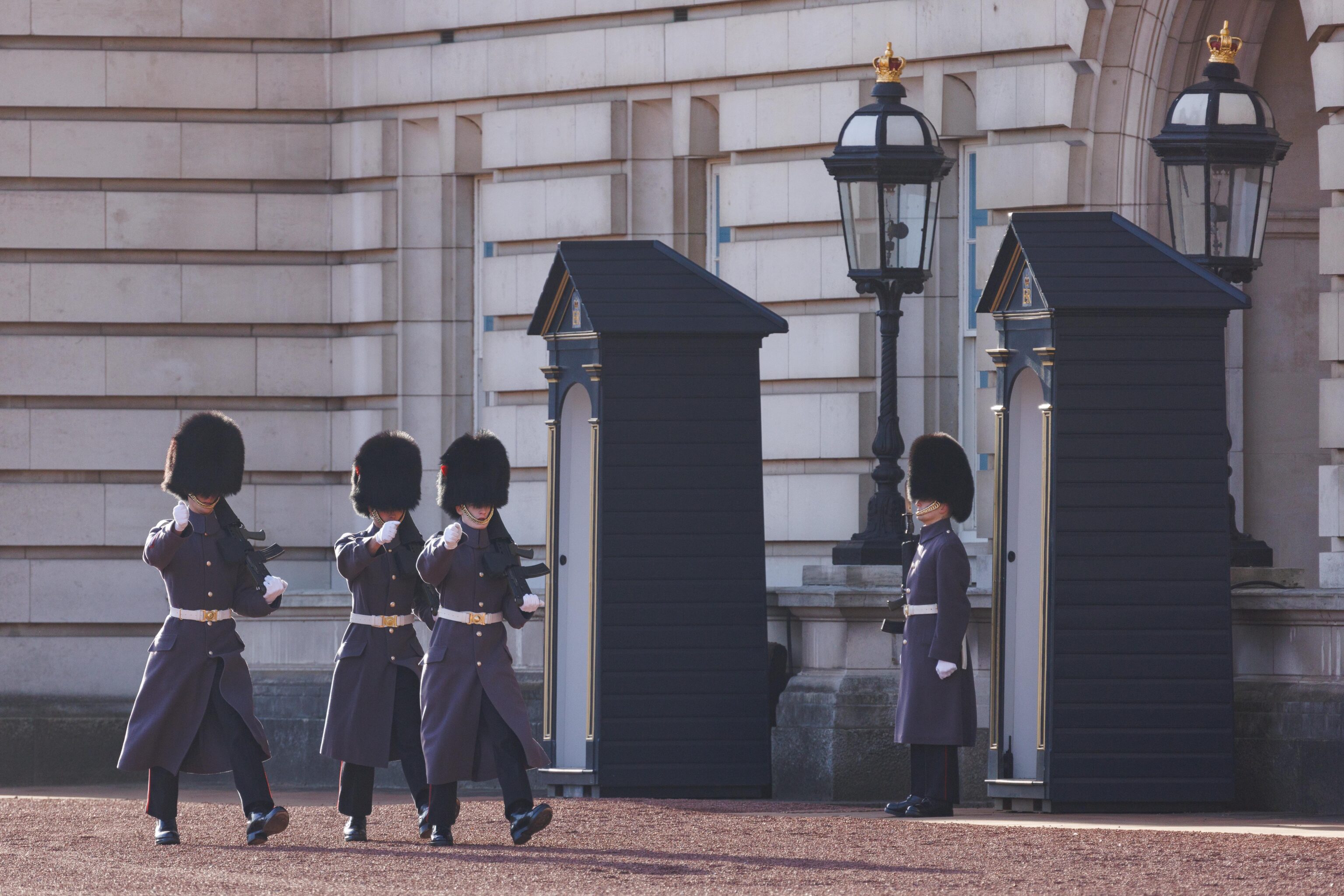
After a short time, we saw three additional guards march out.
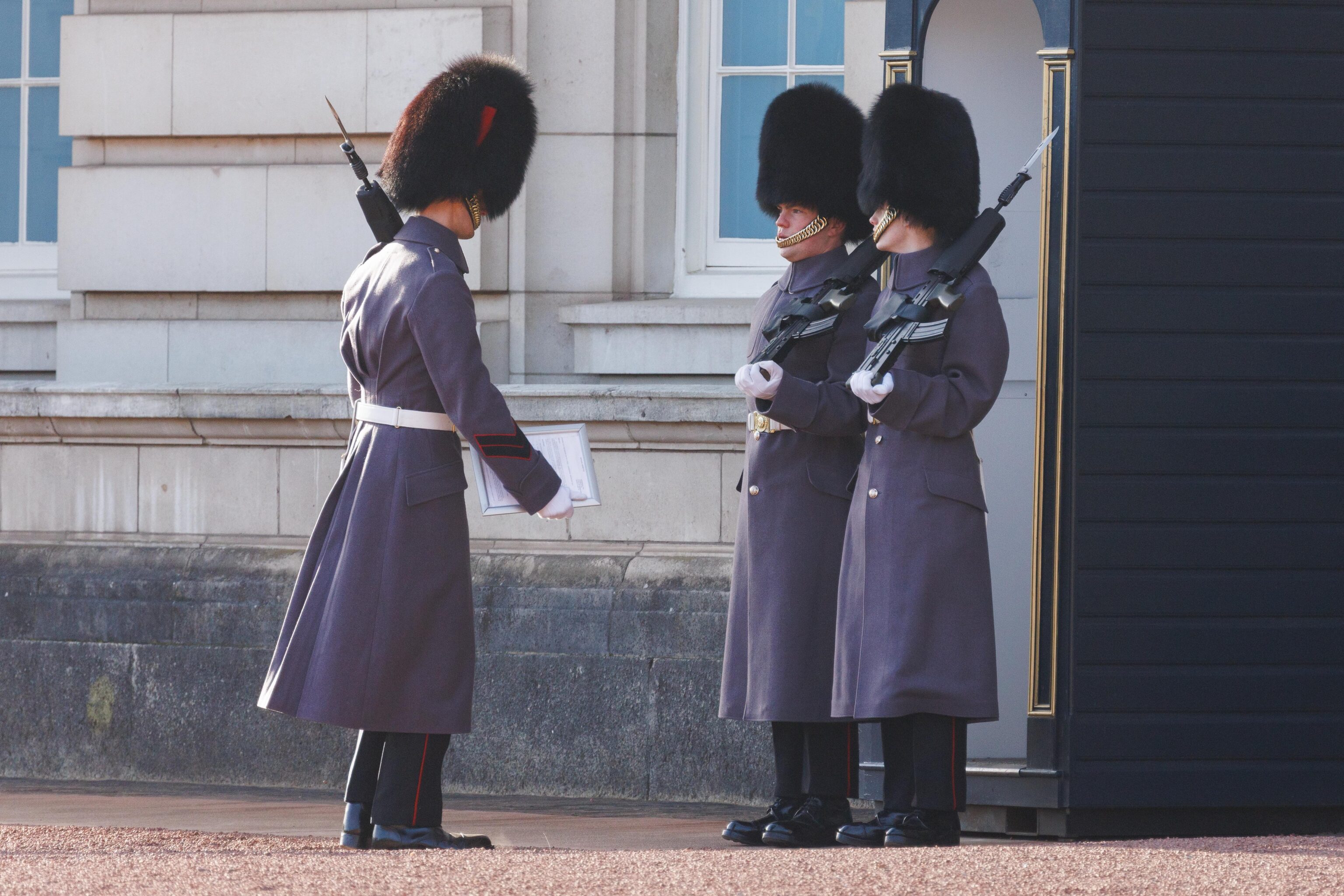
We saw the two guards get changed out for fresh ones. It seems that the way it works is the a higher ranked guard approaches with the replacement. The replacement stands next to the guard who is currently on duty. The leader then goes into the little structure and pulls out a clipboard. He then seems to read it. The clipboard is placed back into the structure and the old guard walks away with leader.
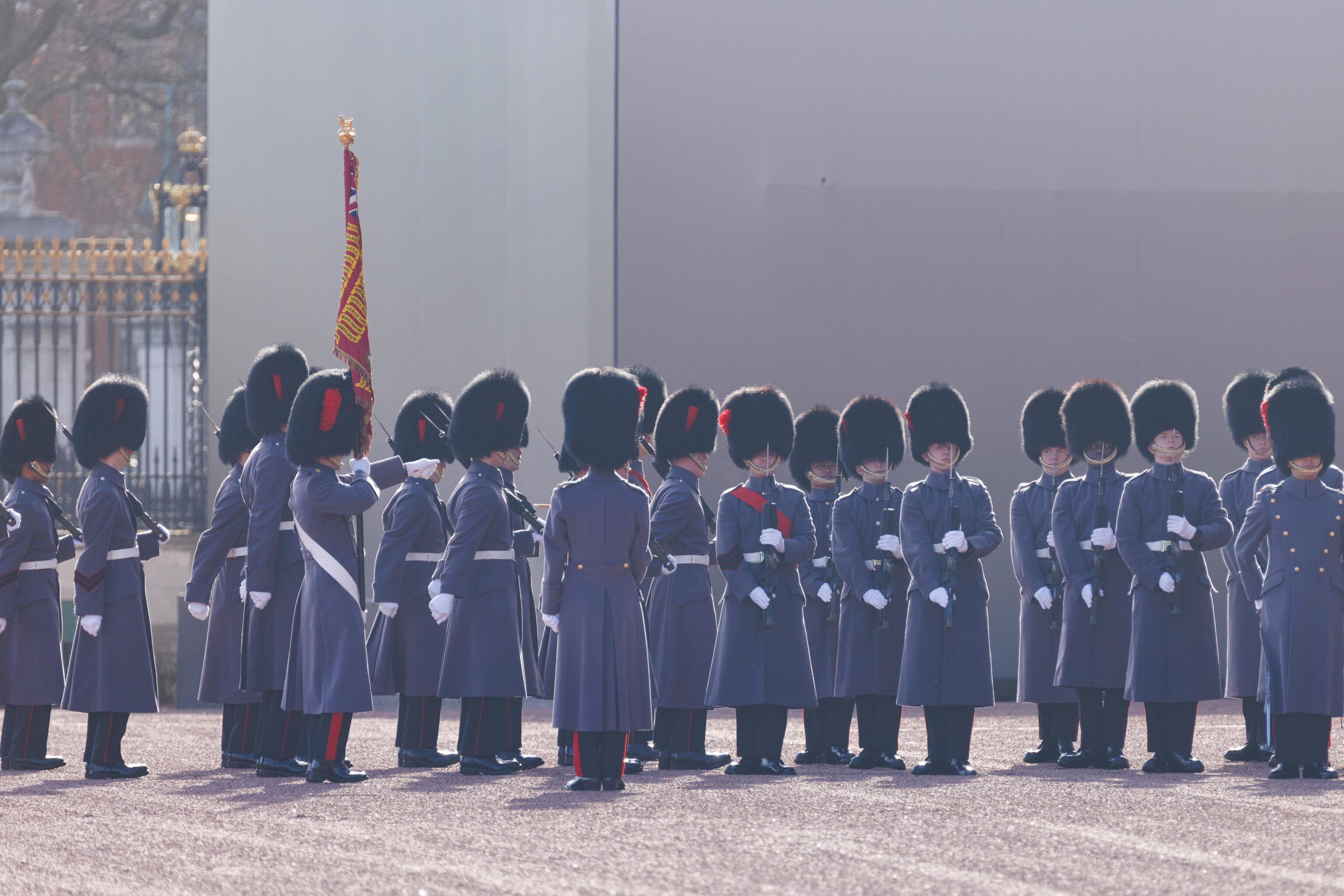
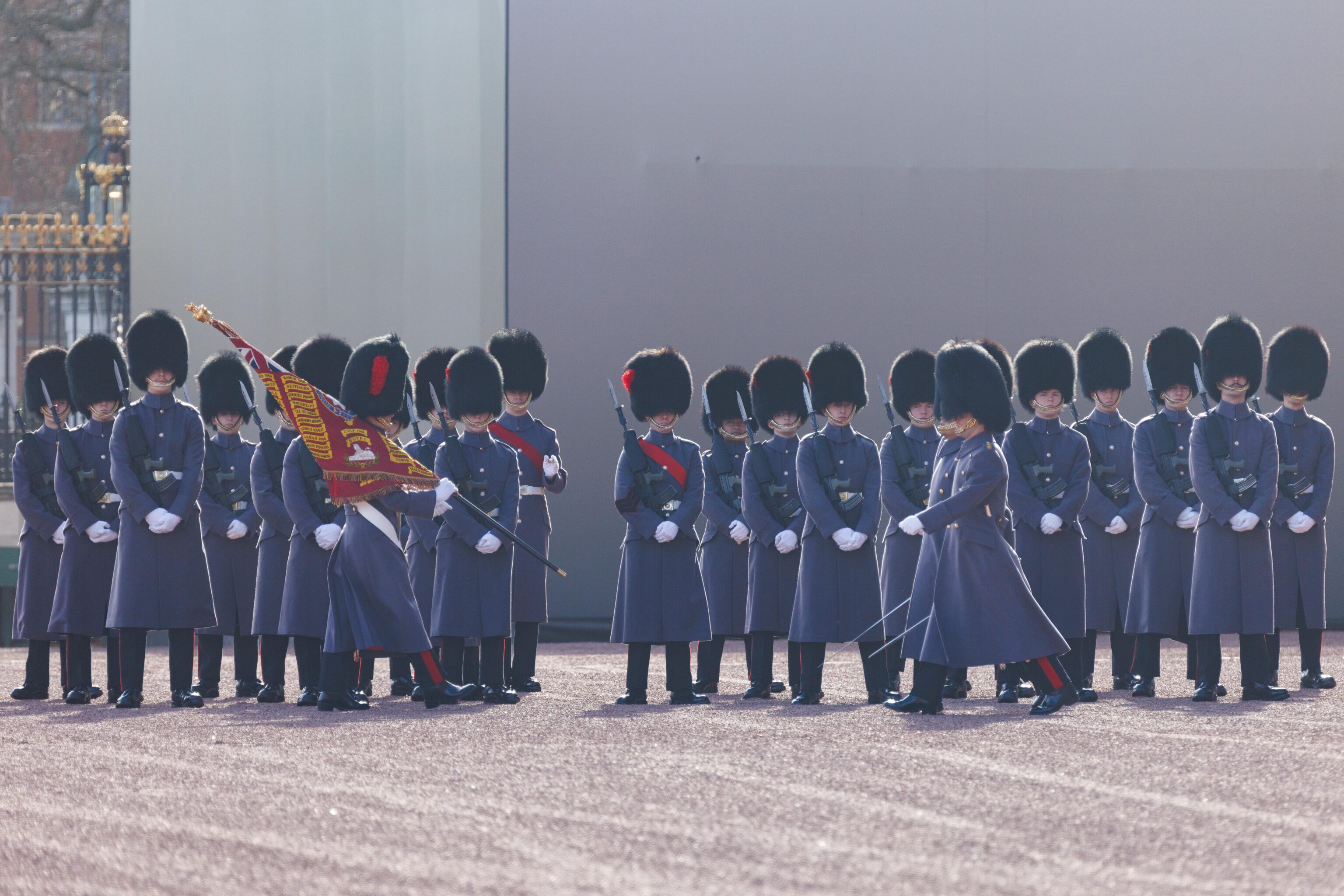
After waiting for awhile longer, more guards entered the palace grounds. This is the unit that is getting swapped out. They are accompanied by their band.
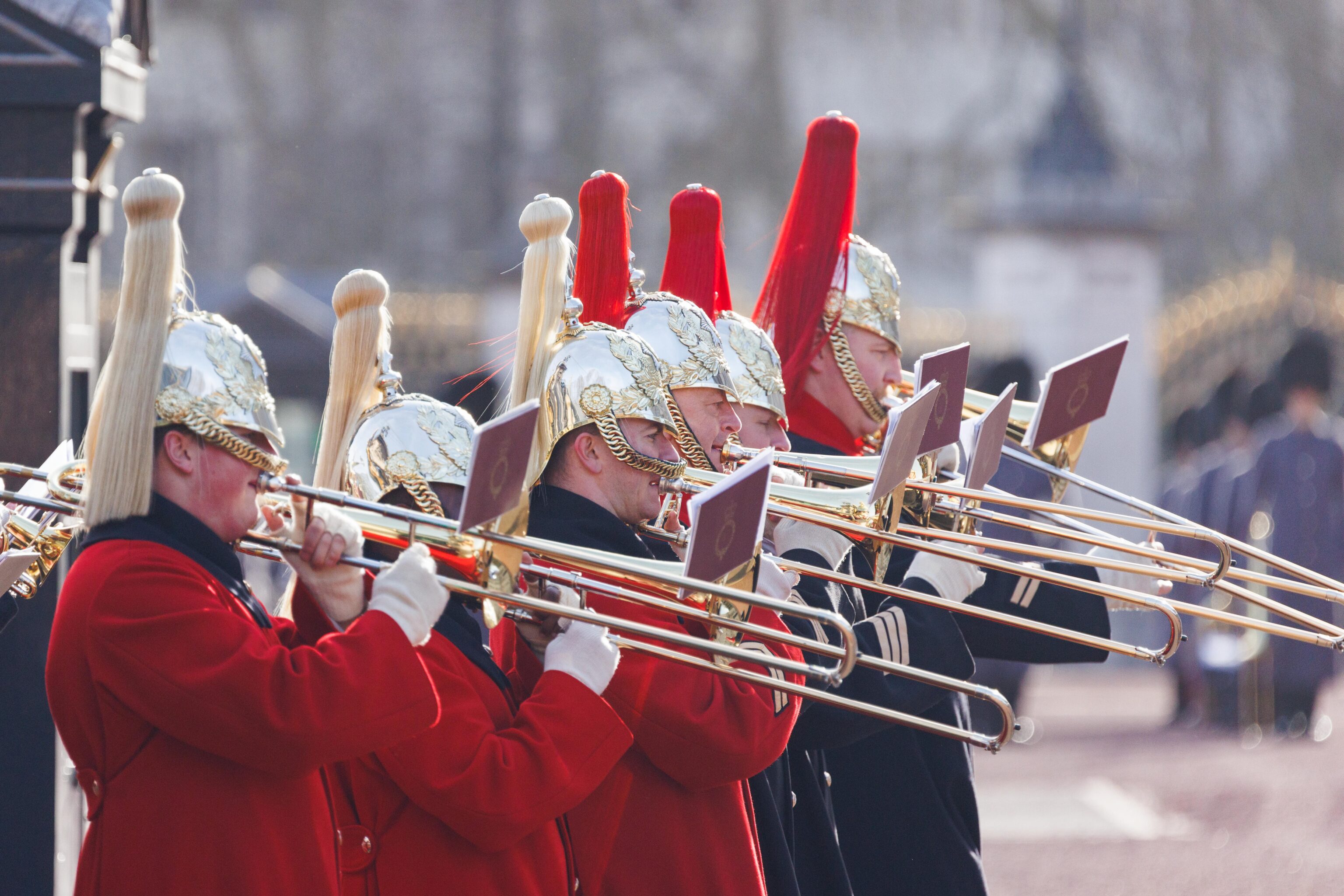
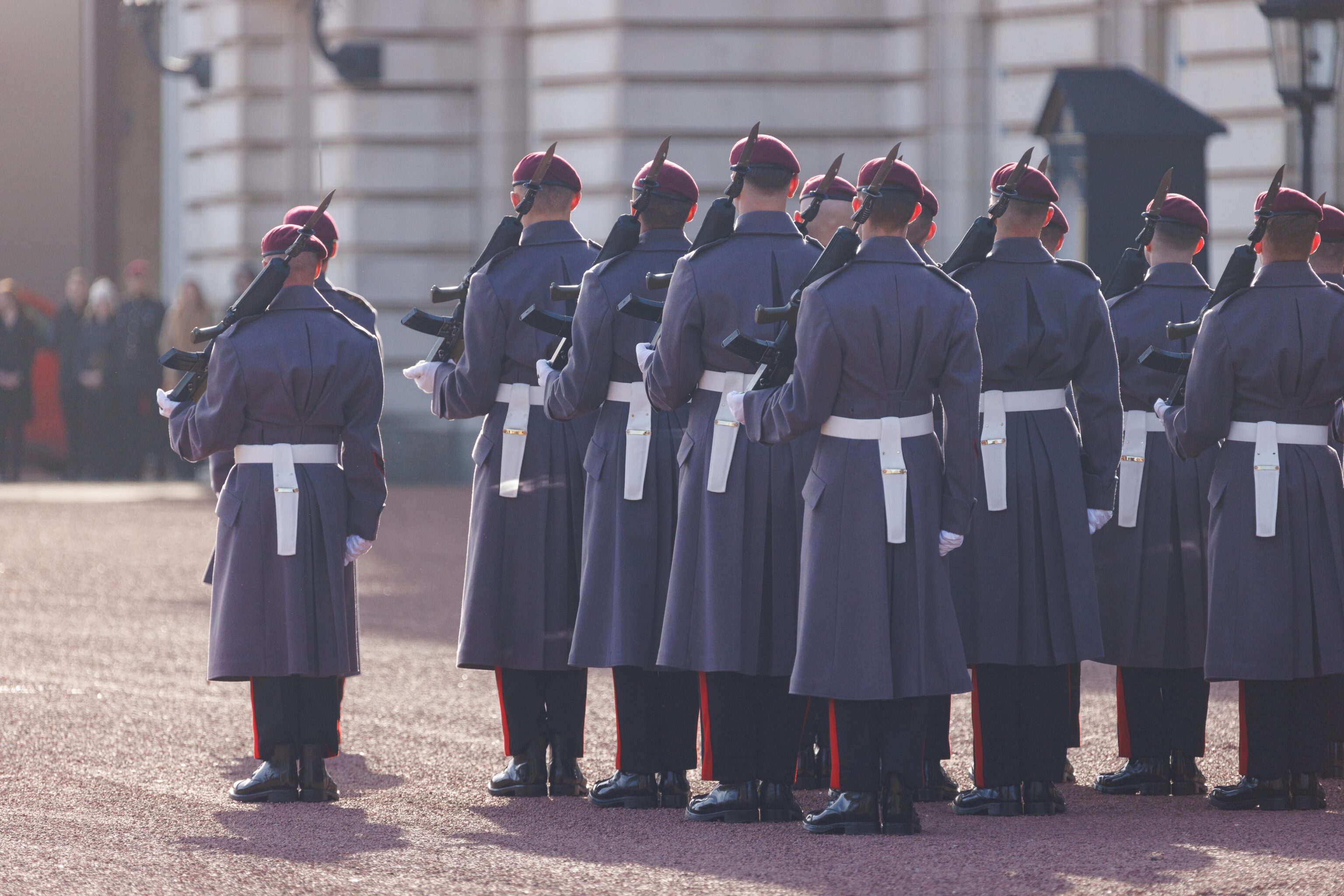
Soon, the new unit arrives. They visually look different.
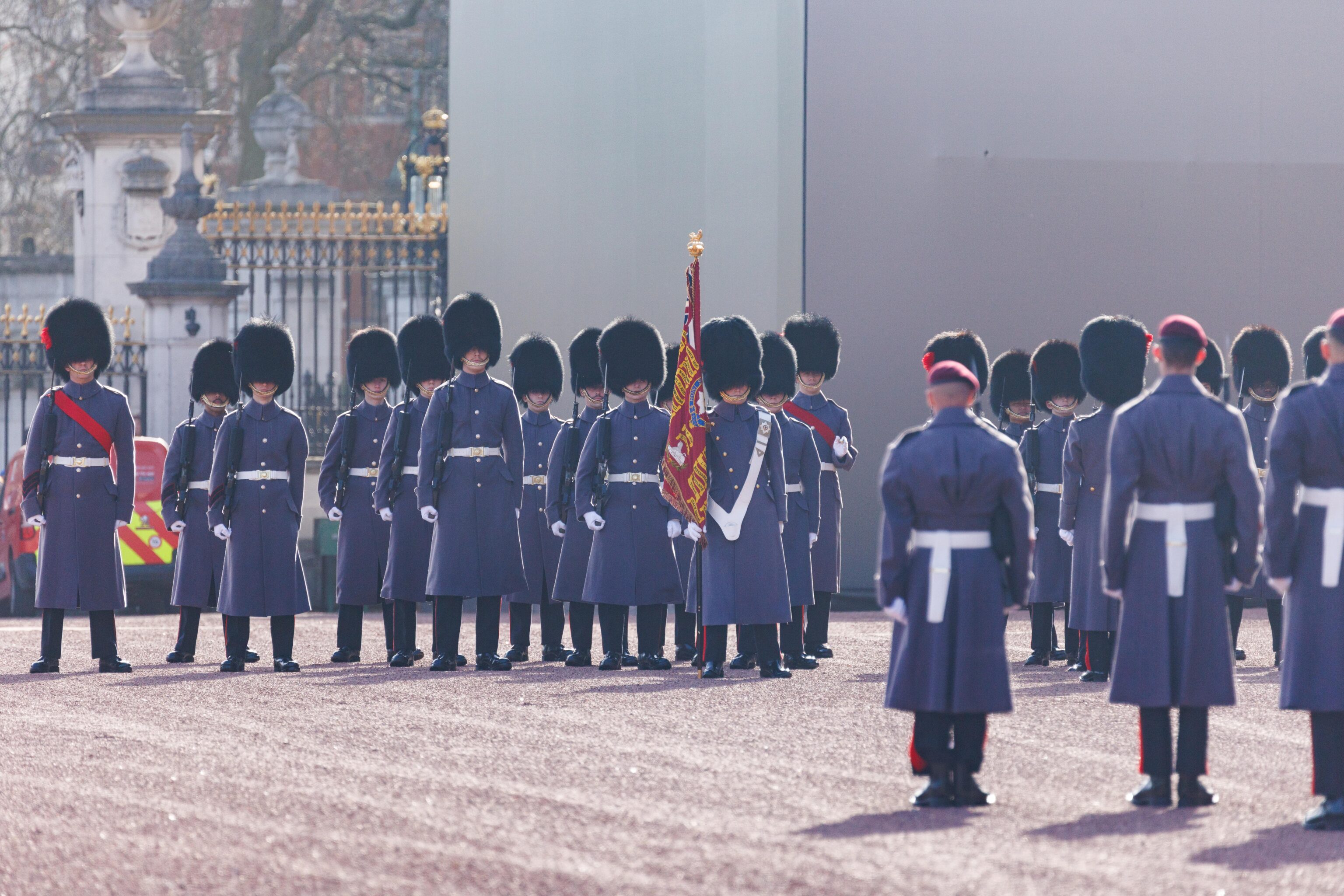
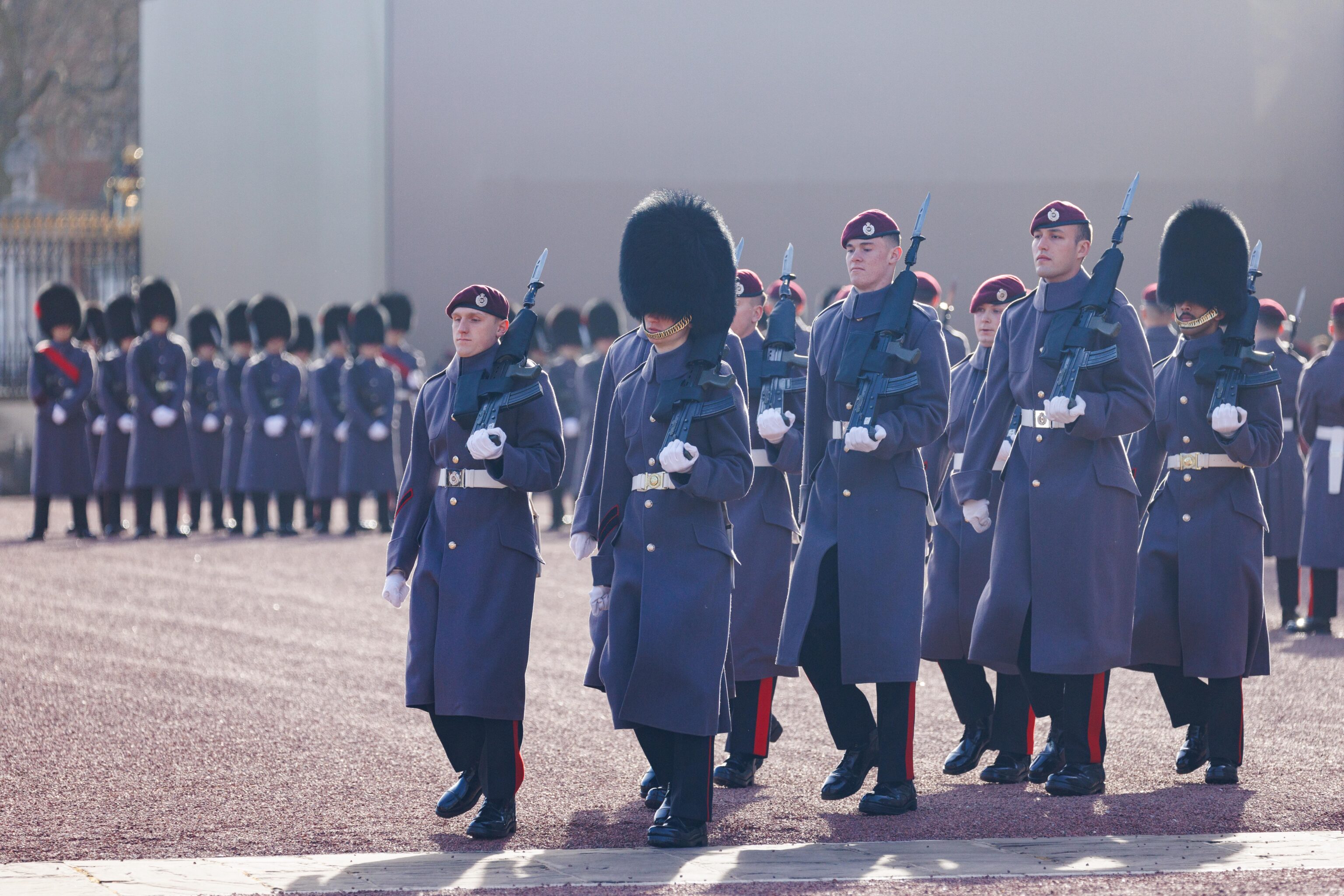
It is not at all obvious what exactly is going on. There is quite a bit of marching around and standing at attention.
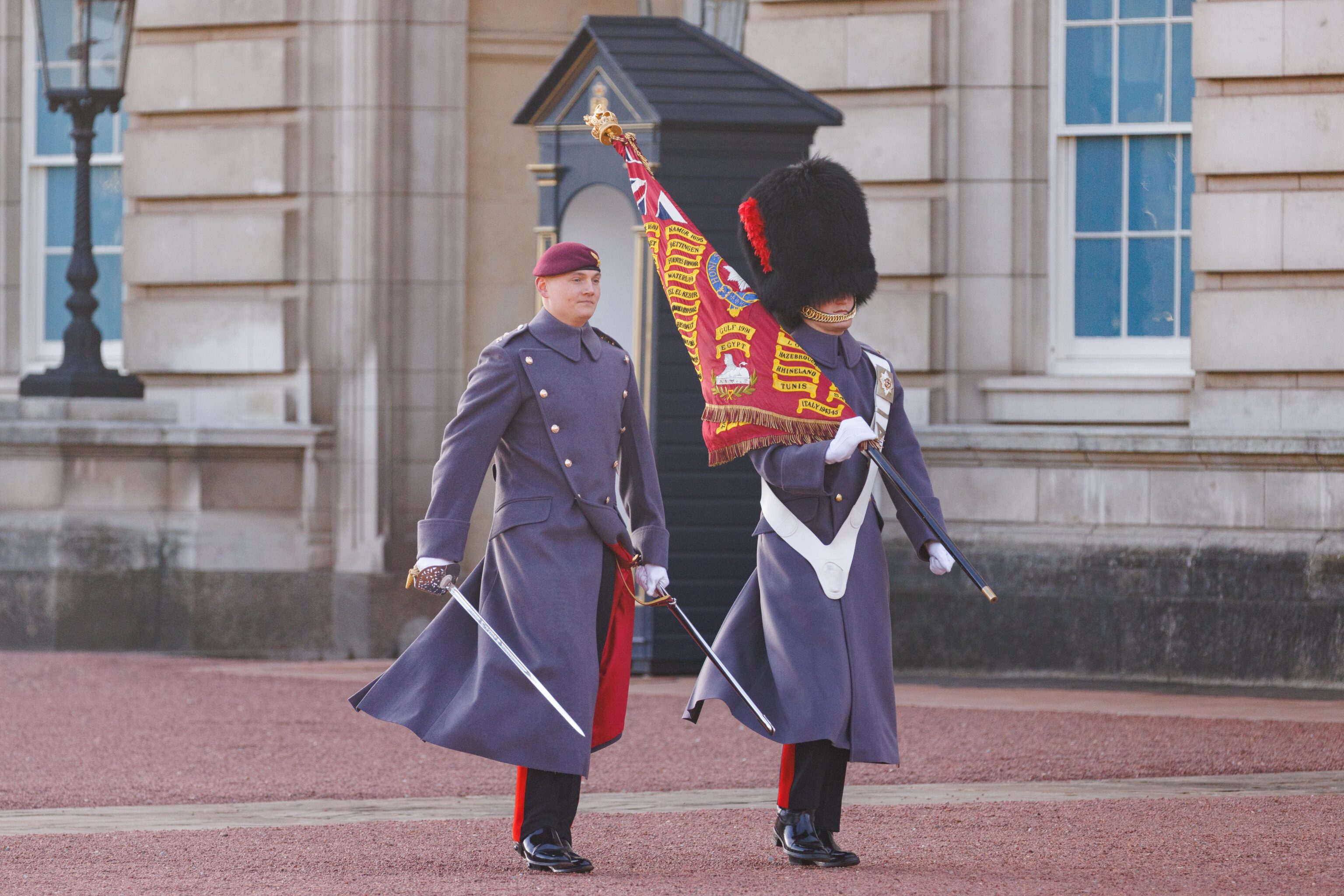
These two, along with maybe two other pairs, seem to march straight a point, quickly stop, and turn around. They do this for a very long time.
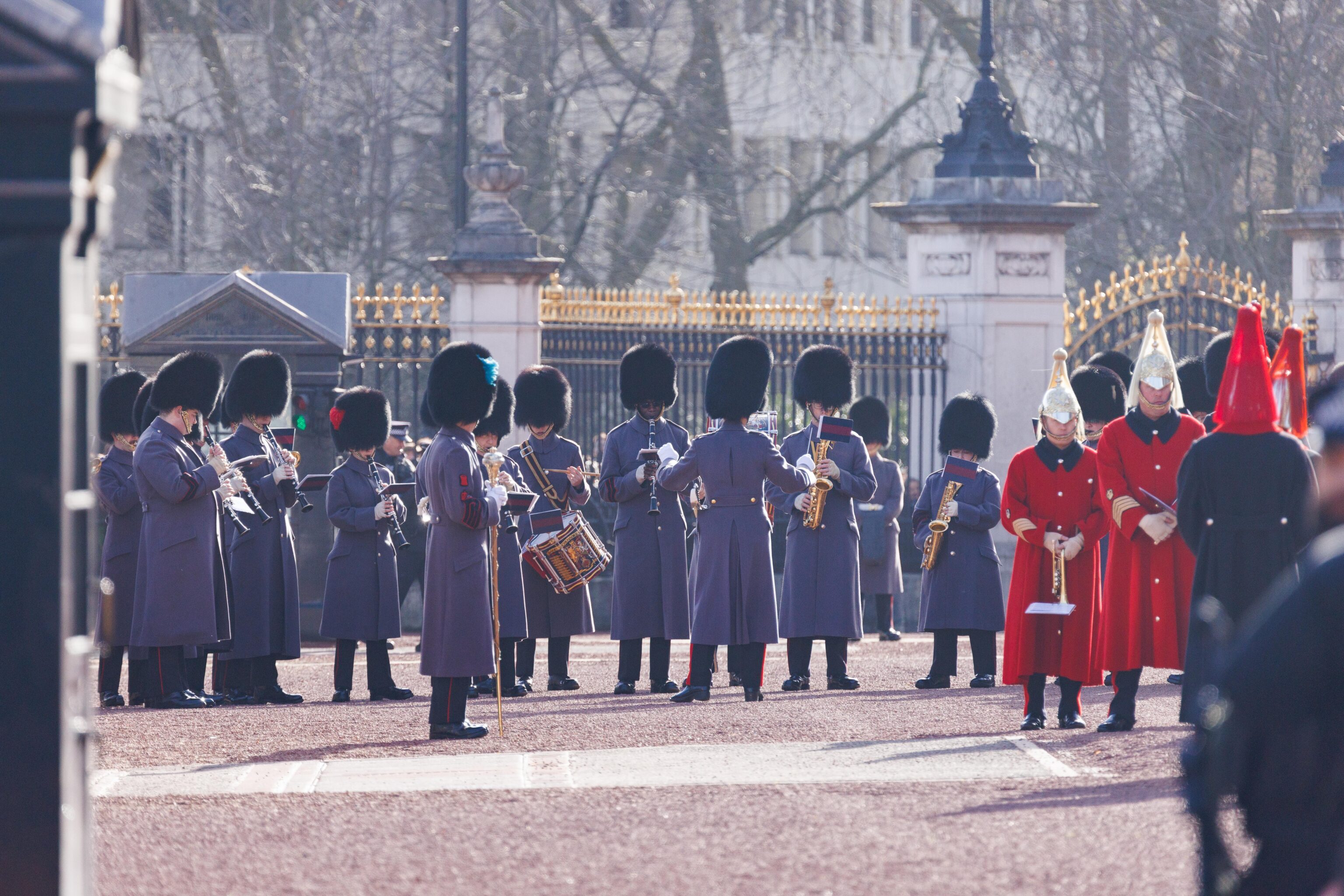
Eventually, the two units alternate in playing music. Some of it seems to be a selection of modern songs. The outgoing unit even plays a bit of September by Earth, Wind & Fire! Sadly, this is not a musical and no one breaks out in dance or widespread singing. If I were King, I would make it happen. It’s probably good that I am not eligible to be King!
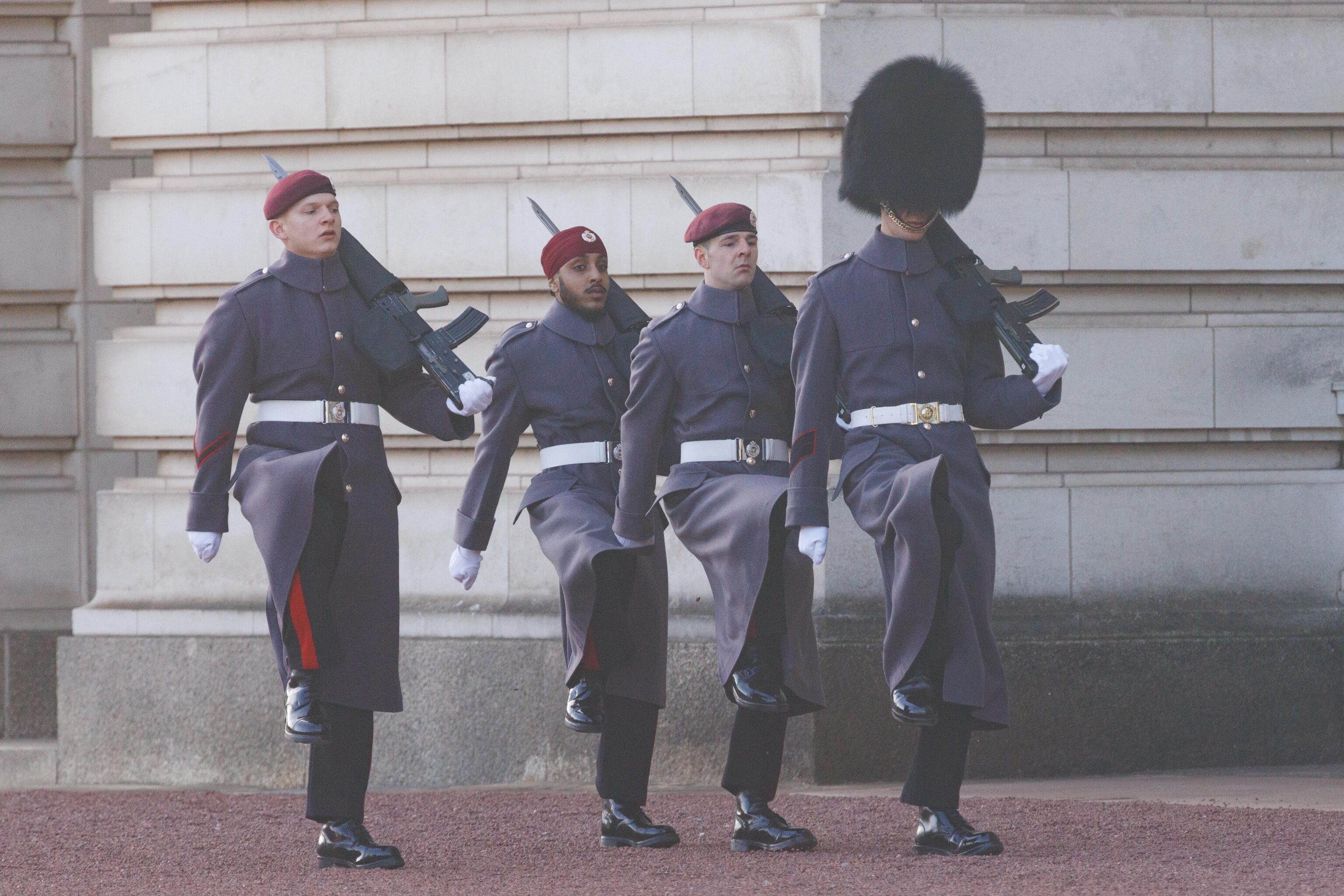
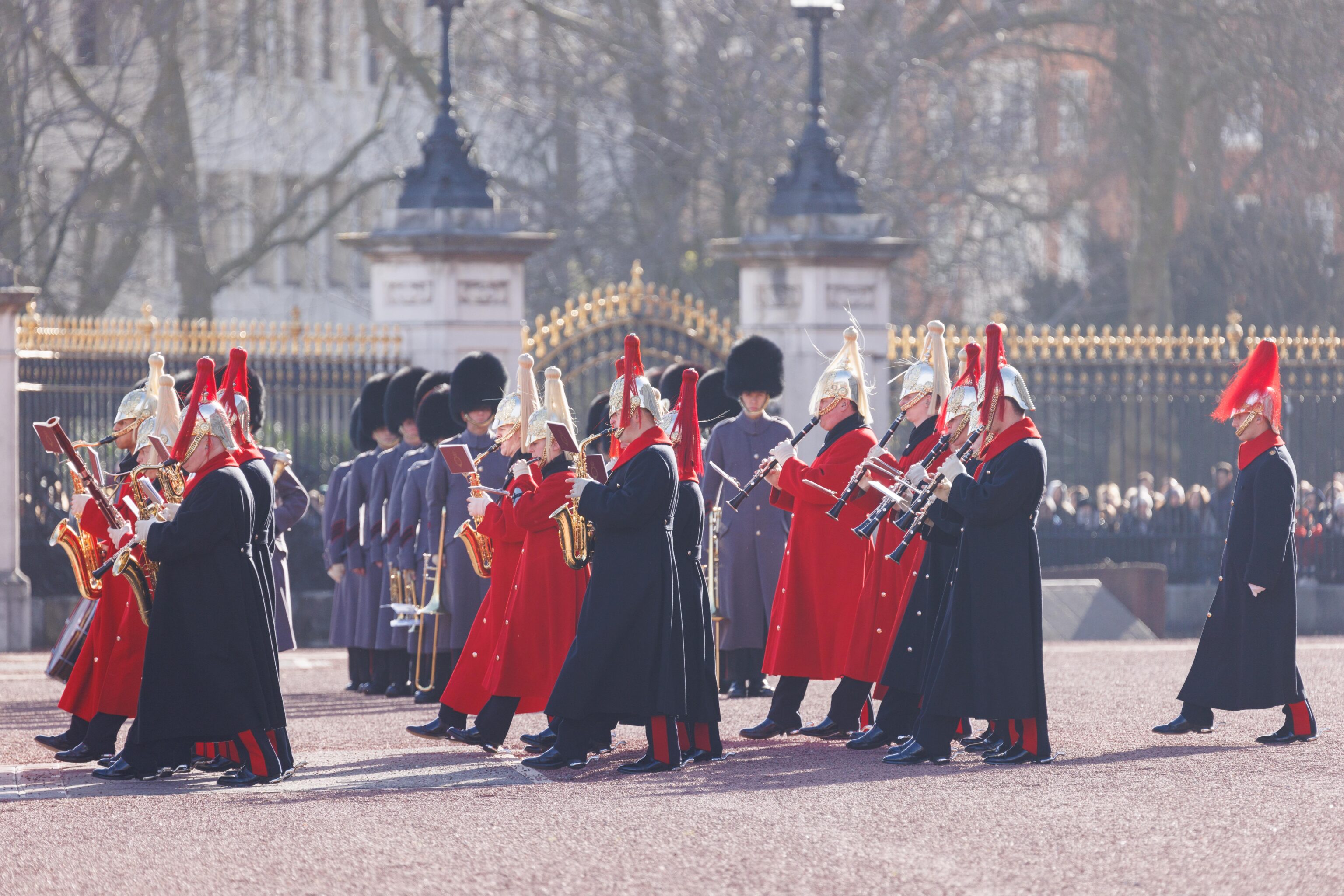
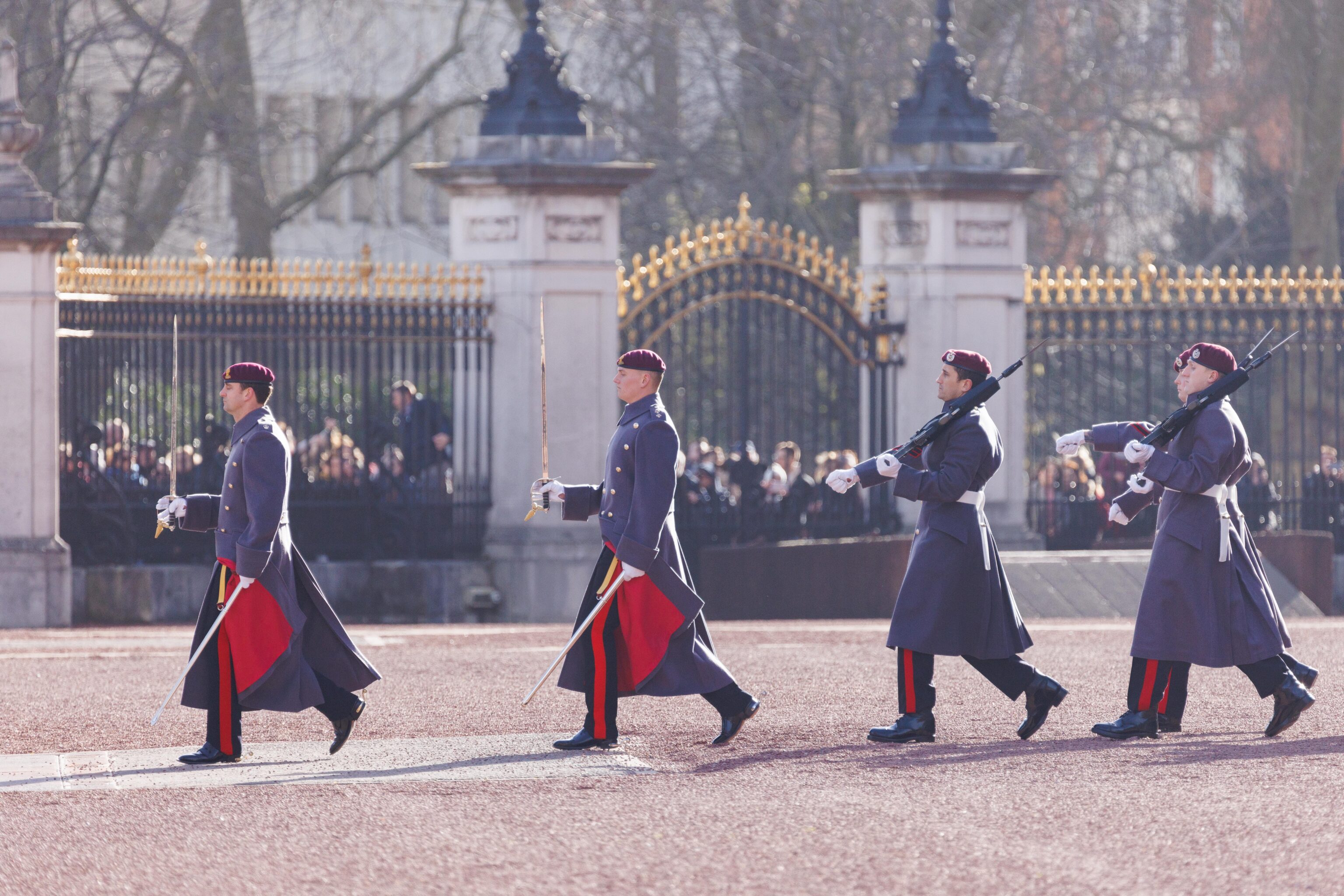
After the music playing, some more marching ensues. Eventually, the old unit departs, part of the new unit remains, and the remainder of the new unit marches out. The guard has been changed!
Wellington Arch
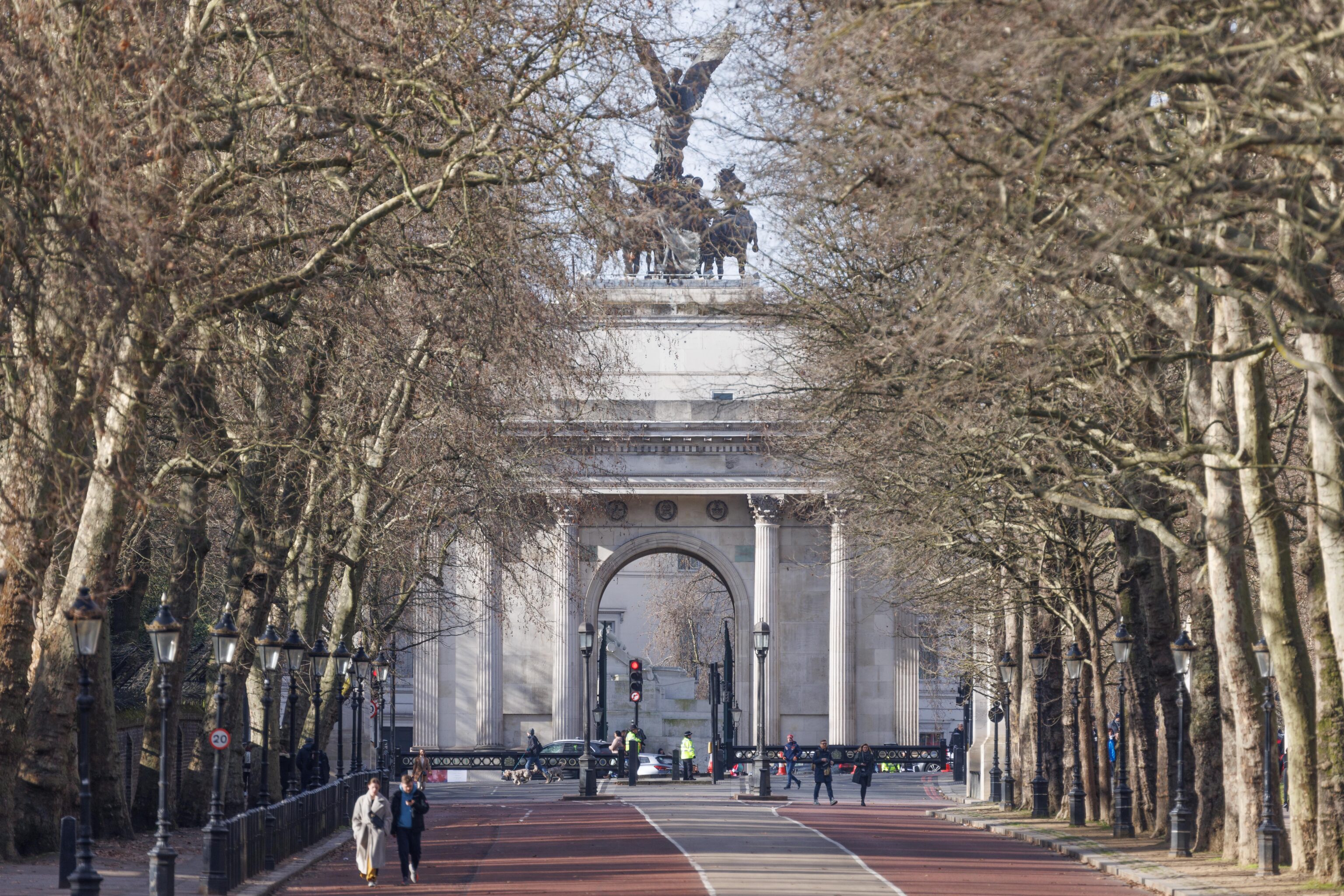
Afterwards, we walk towards Wellington Arch, mainly because we are headed to the Underground station there.
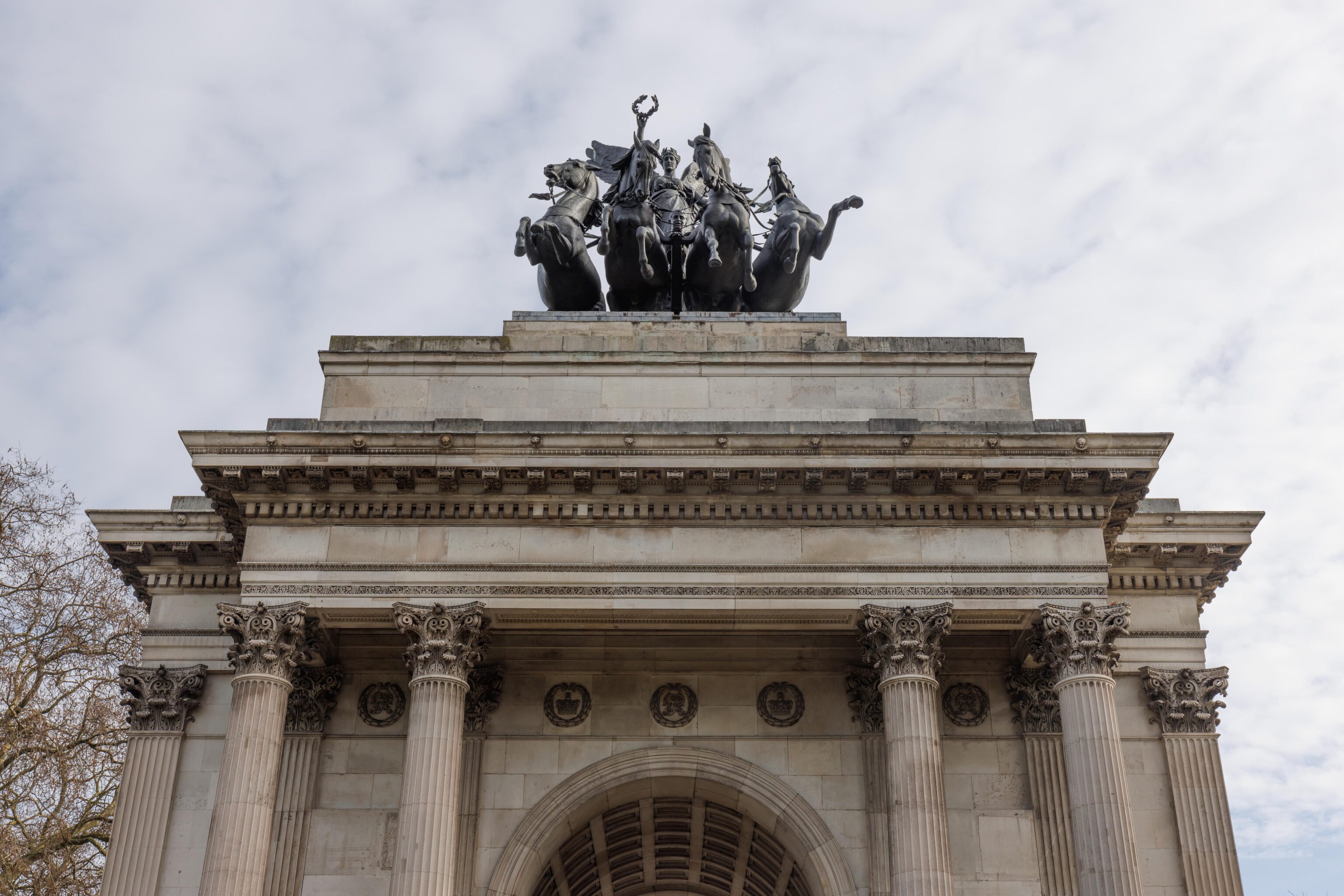
The arch was originally built as an entrance to the palace but was later converted to honor the victory over Napoleon!
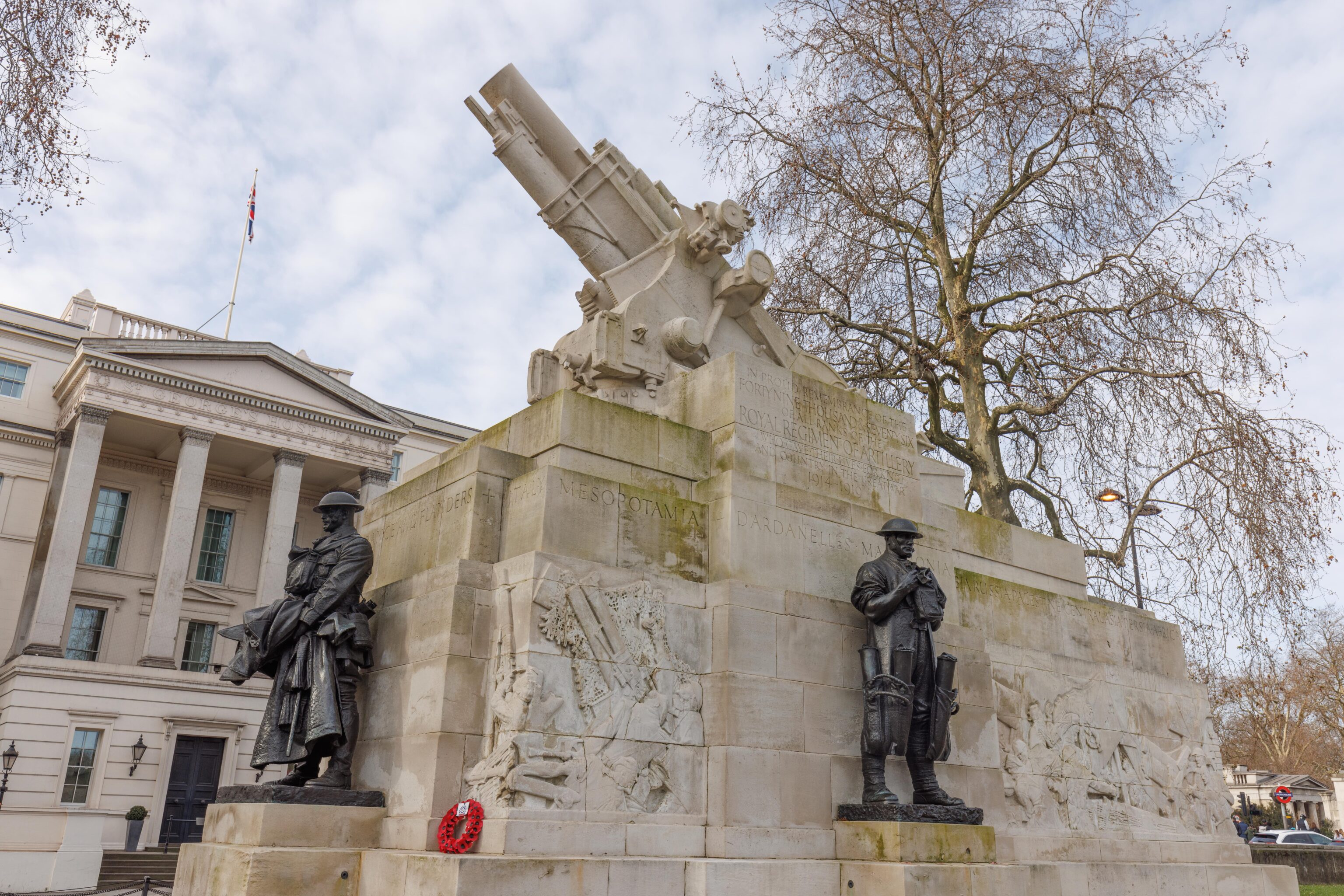
The arch is in a small park surrounded by road. The park has a few monuments, including this one to the Royal Artillery during World War I.
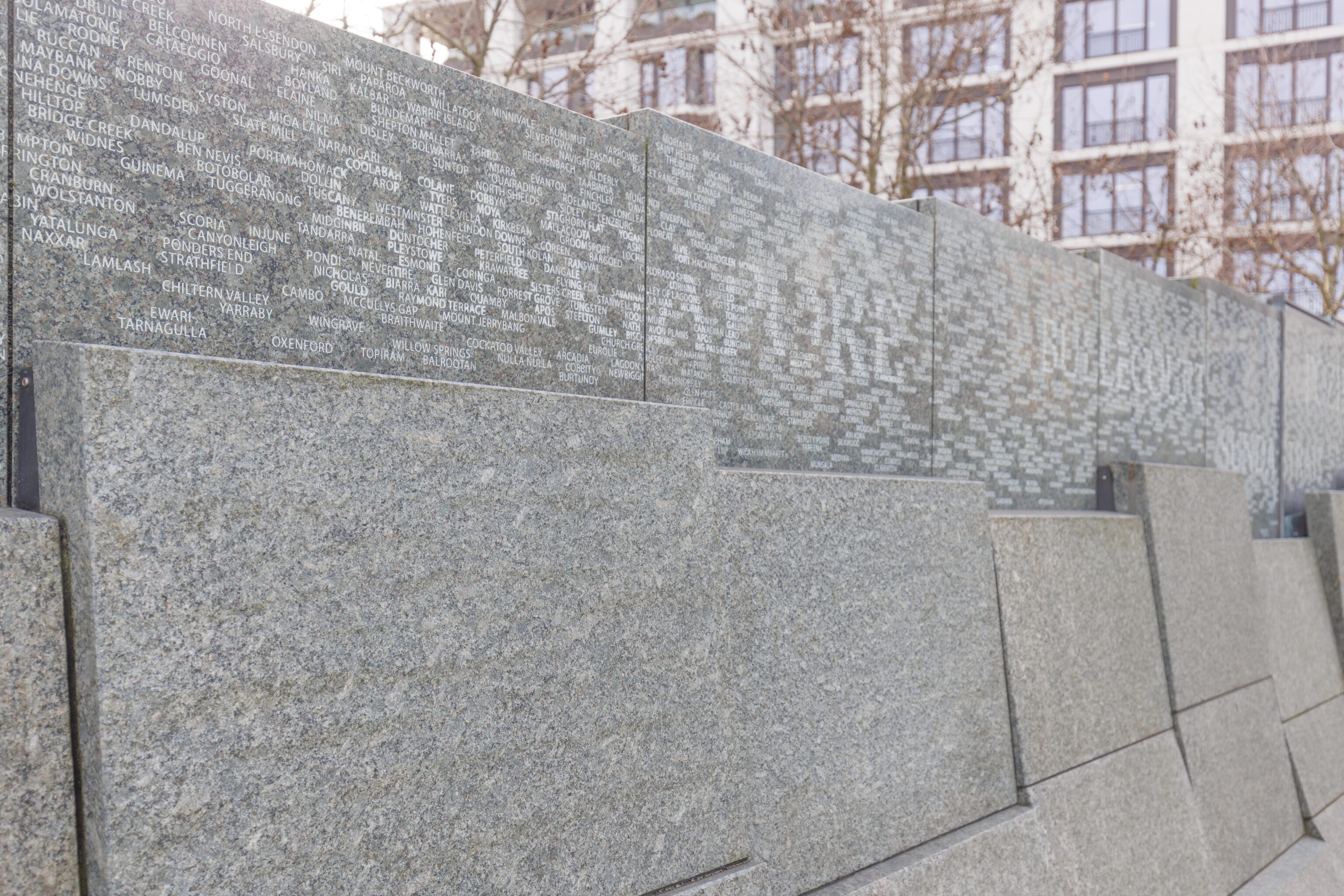
While I’ve walked by Wellington Arch many times, I don’t really recall noticing the Australian War Memorial. It is a very cleverly designed wall. It lists the birth places of all the Australian soldiers who died during World Wars I and II. With 23,844 names listed, they are obviously written rather small. Parts are in a bolder white color, resulting in the locations of major battles being visible from afar.
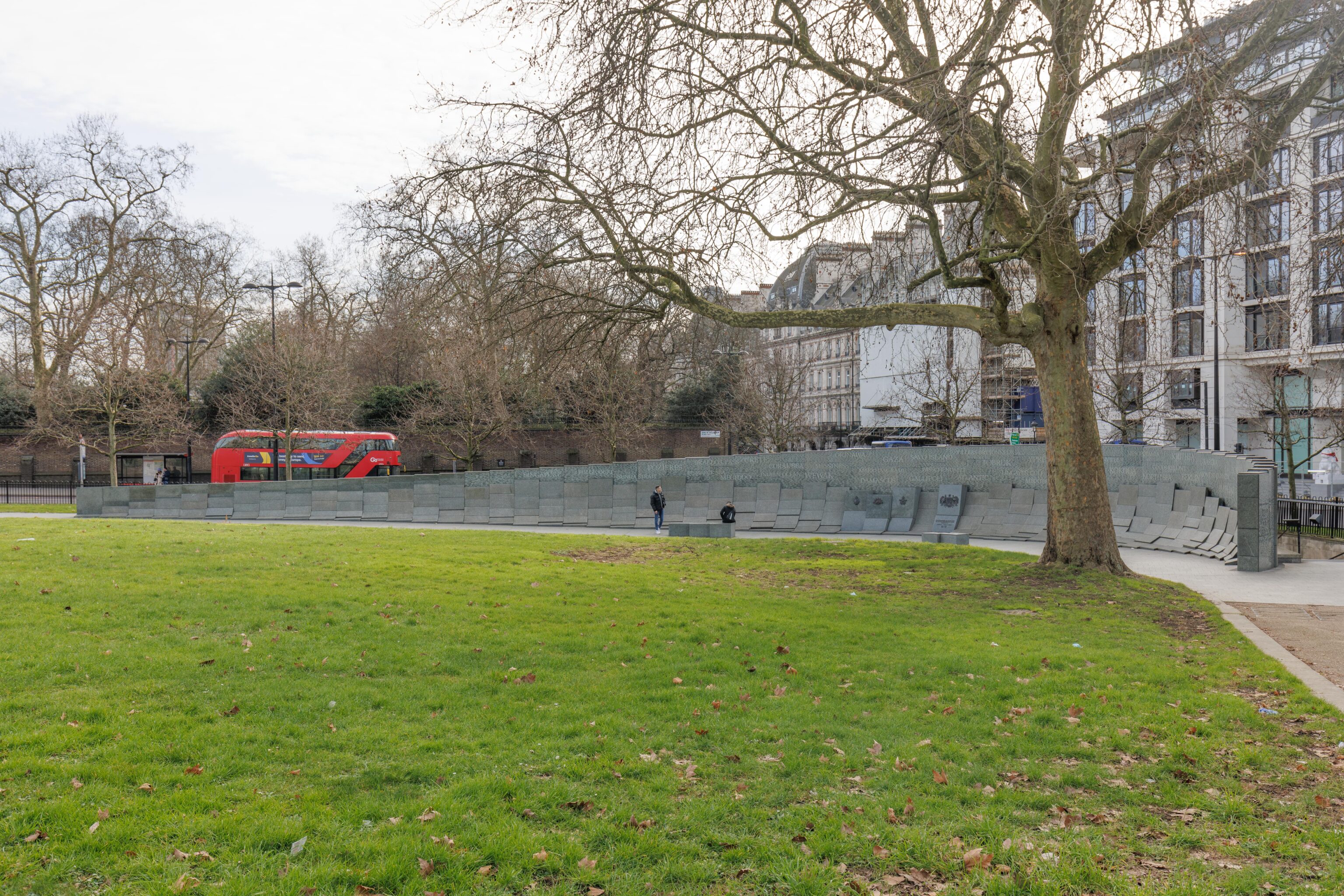
The wall isn’t really as obvious as the Wellington Arch or the big artillery piece atop the Royal Artillery monument.
We then headed into the Underground station. That was a mistake. The escalator down was being repaired. There are many, many stairs! We should have walked over to the Green Park station instead.
Return to the Thames
After having a late lunch around Piccadilly Circus, we walked though Leicester Square and turned towards Trafalgar Square.
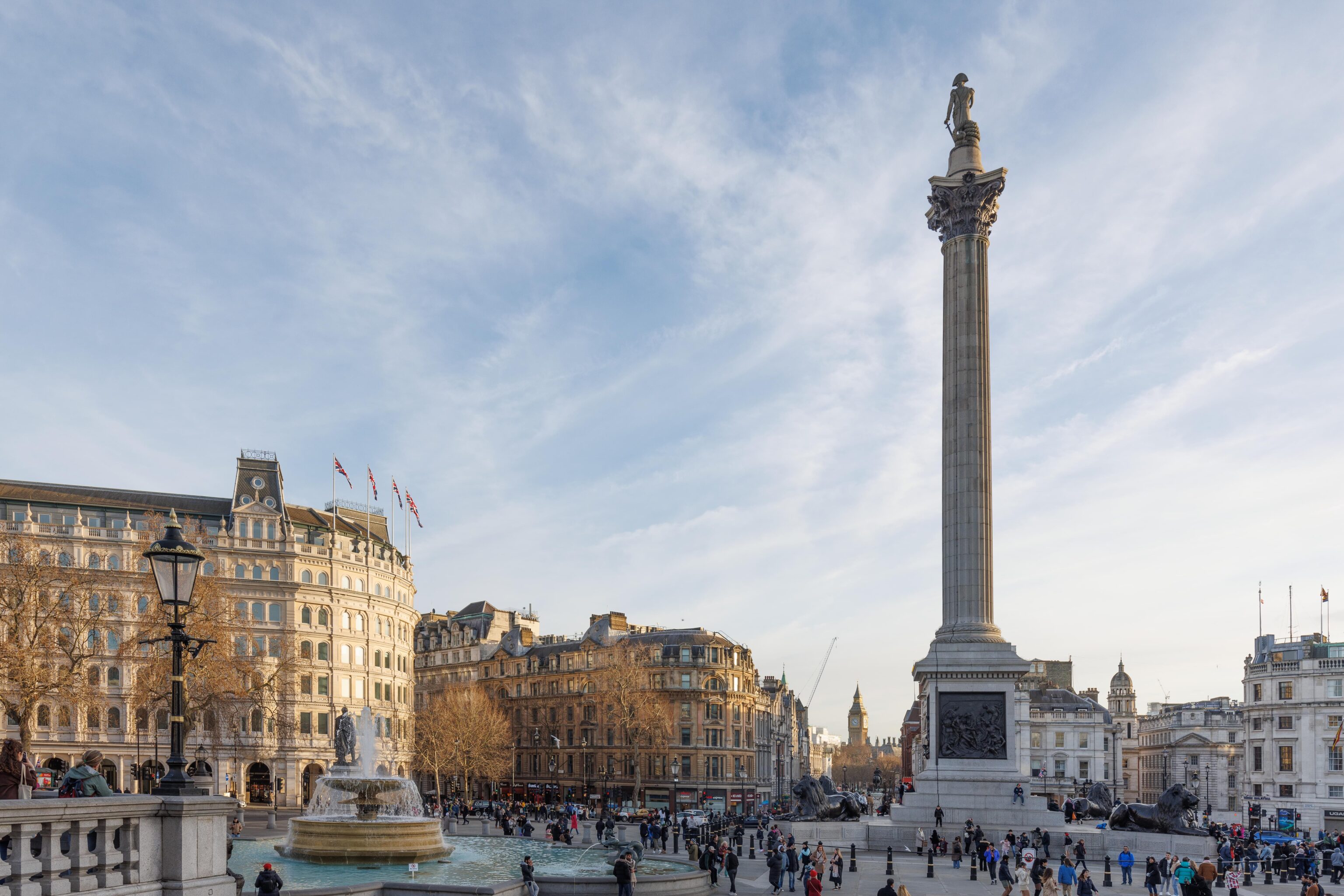
The sun was low on the horizon as we approached.
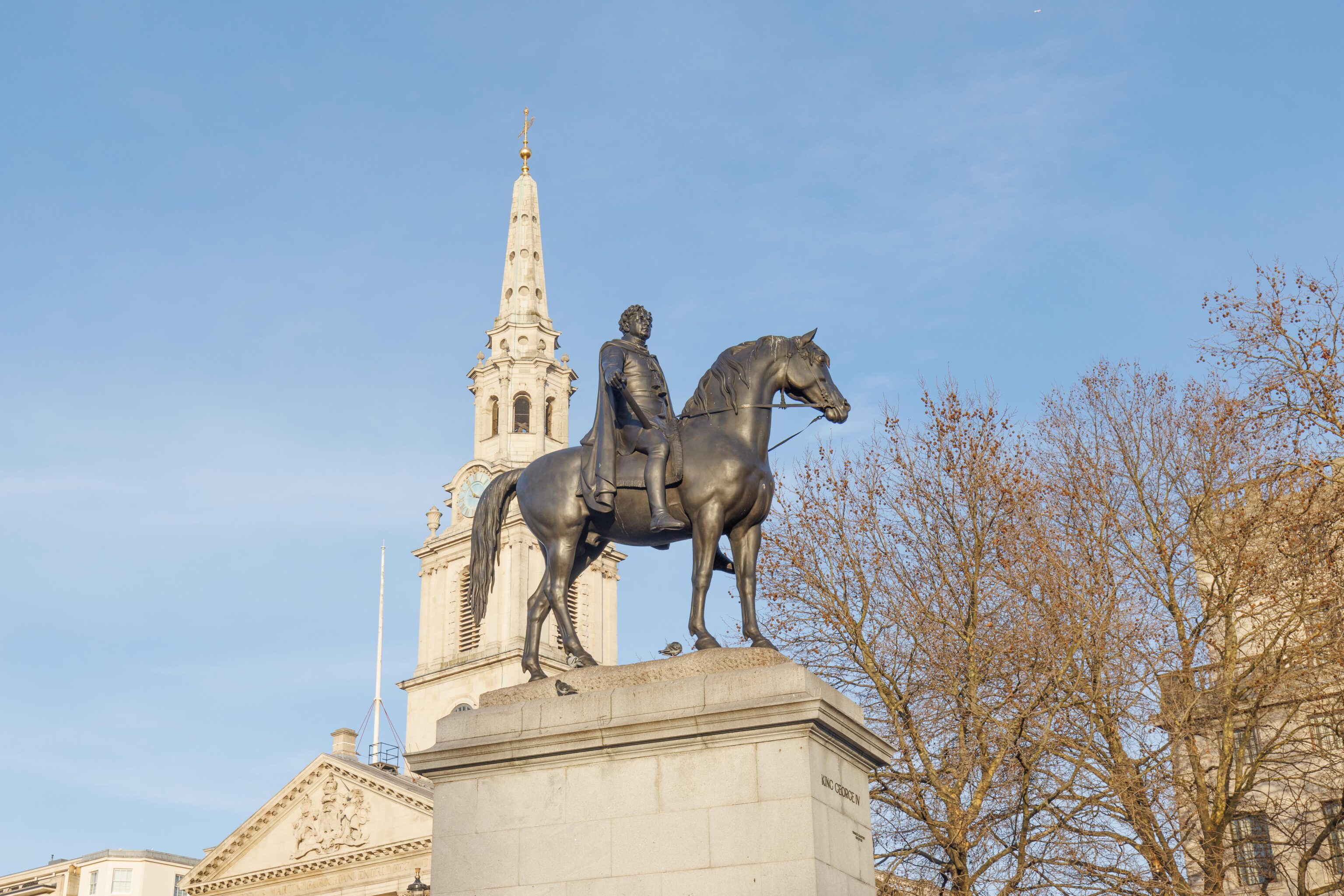
There is an equestrian statue of King George V, the grandfather of Queen Elizabeth II and thus the great-grandfather of the current King.
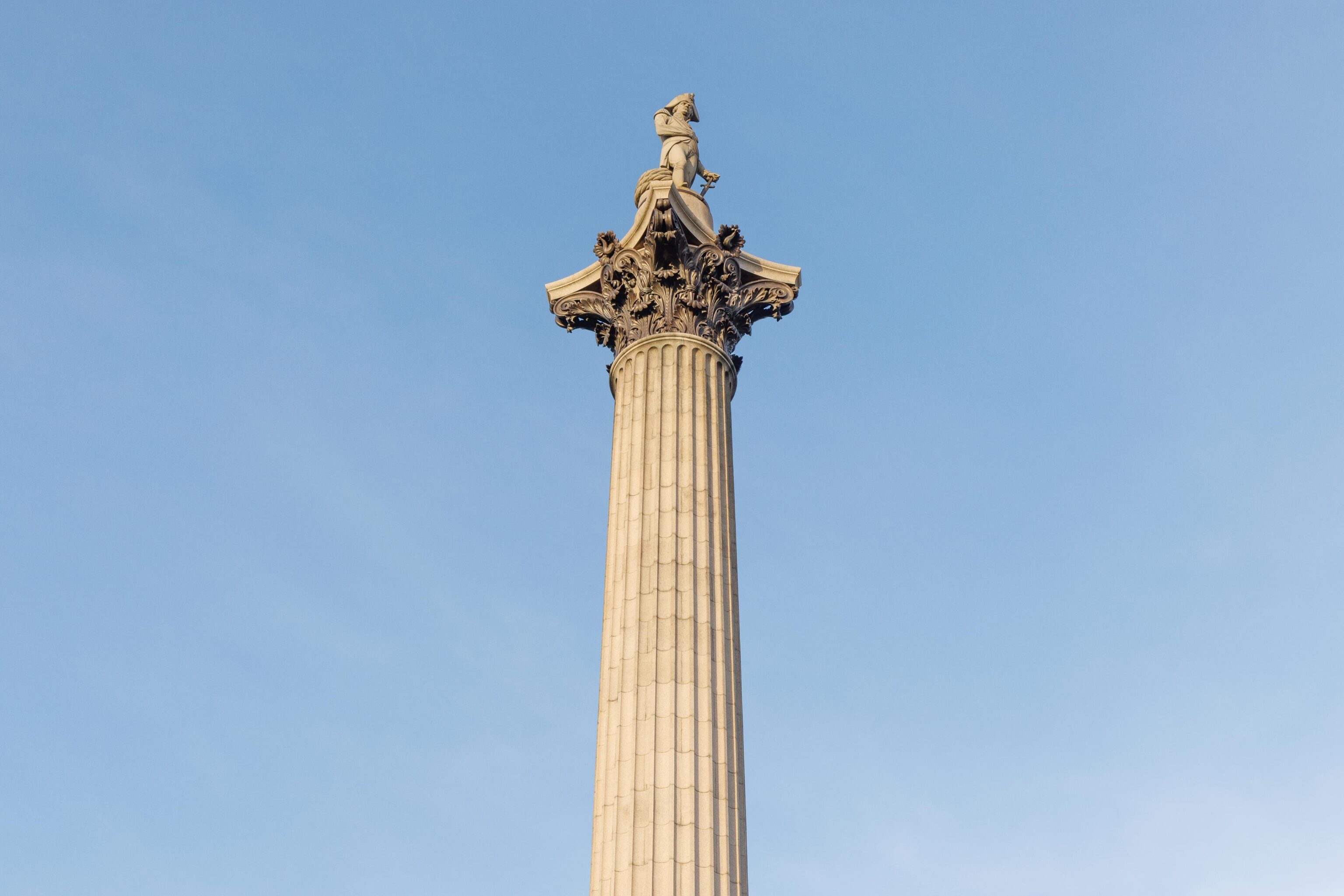
Lord & Admiral Nelson stands atop his column at Trafalgar Square. It honors his victory over the French and Spanish at the Battle of Trafalgar where he died.
Rather than heading straight back towards the Palace of Westminster, we turned to cross the Thames by the bridges beyond Charing Cross Station.
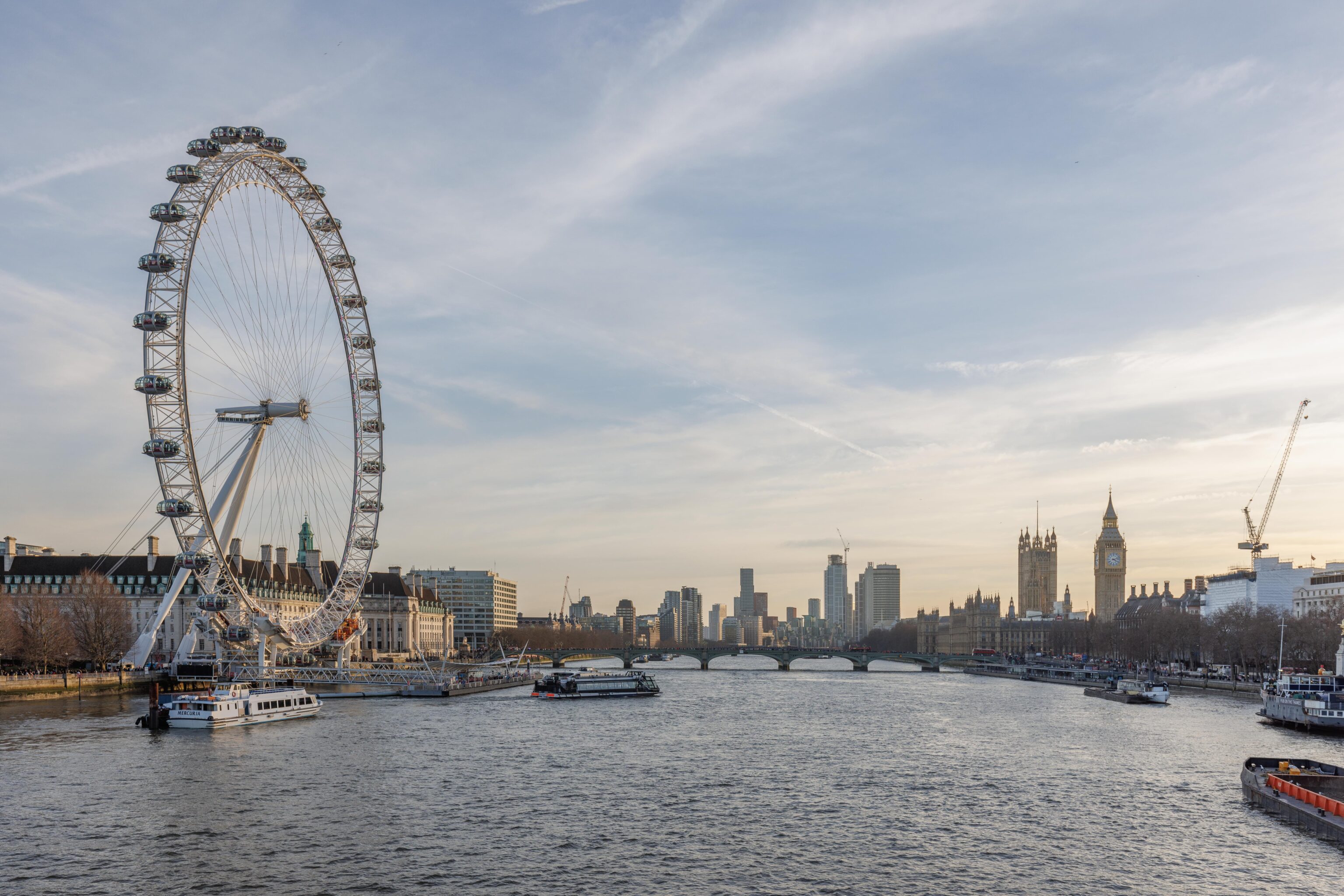
After taking what seems to be the slowest elevator in all of London up to the southern Jubilee Bridge, we crossed the Thames by foot.
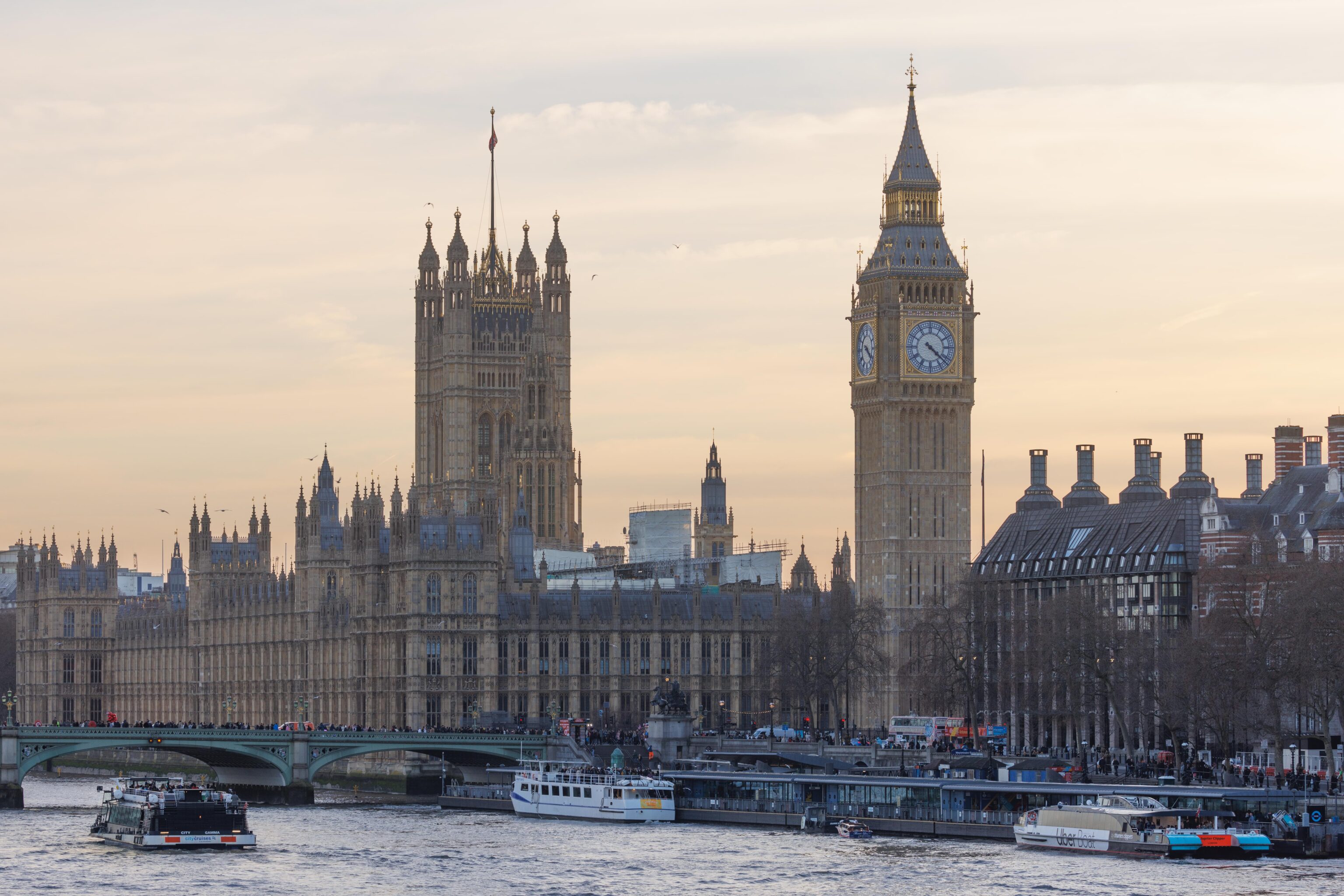
While the sun was headed down, it was still a good while before sunset.
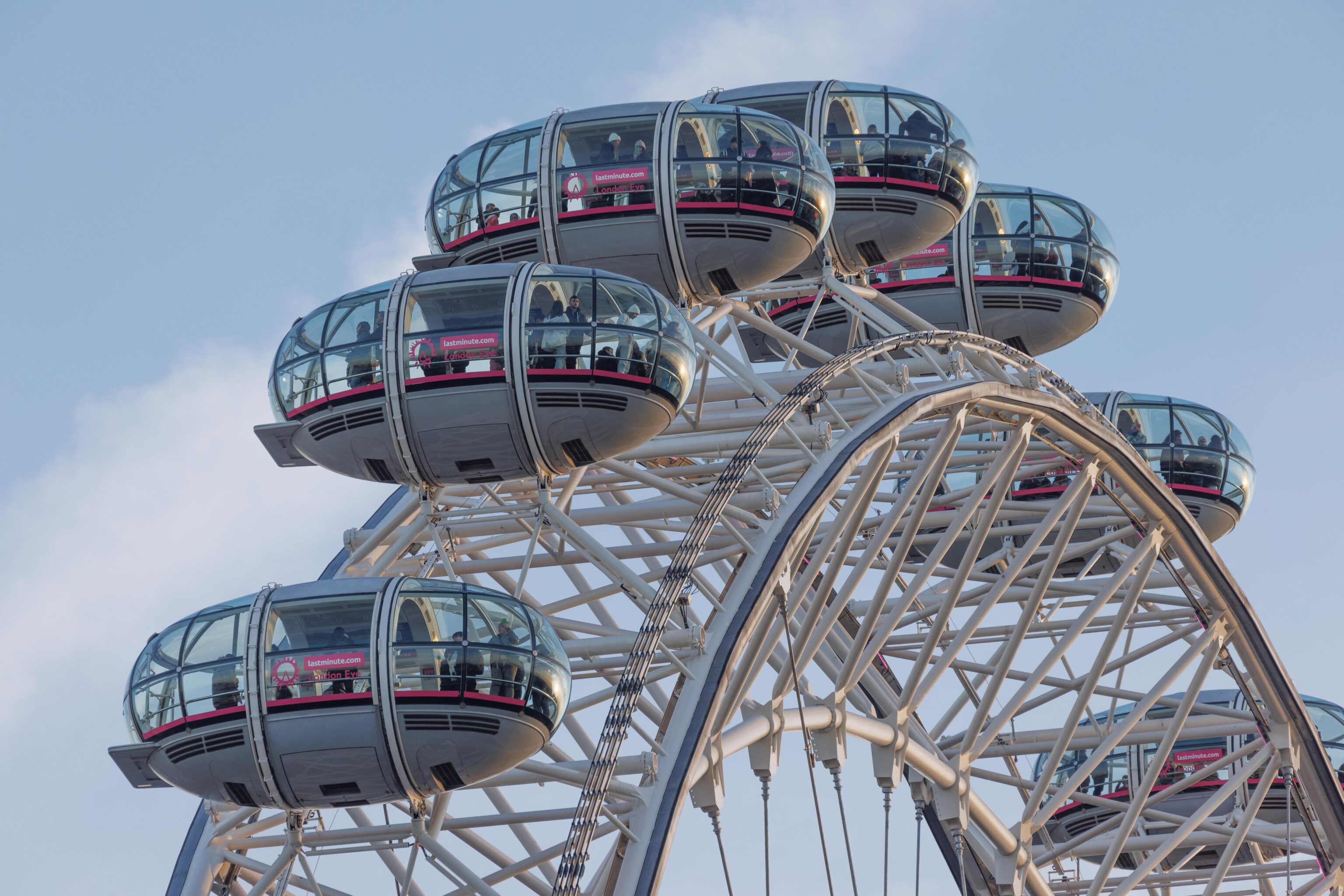
We took a final close look at the London Eye before returning to our hotel to finally get our room after a long day!


